Abstract
Mass balance relations, valid for any counterflow system, are derived and applied to a central core model of the renal medulla, in which descending Henle's limbs (DHL), ascending Henle's limbs (AHL), and collecting ducts (CD) exchange with a central vascular core (VC) formed by vasa recta loops, assumed so highly permeable that the core functions as a single tube open at the cortical end, closed at the papillary. Solute supplied to the VC primarily by the water impermeable AHL may either enter the DHL to be recycled or remain in the core to extract water by osmosis from DHL and CD. If concentrations in core and descending flows are nearly equal, then for all degrees of recycling the ratio of entering DHL concentration to loop concentration is given by r = 1/[1 - fT(1 - fU)], where fT is the fractional net solute transport out of AHL and fU is the ratio of CD flow to the sum of CD and AHL flows. Differential equations for a single solute are derived for core and AHL concentrations. Explicit analytic solutions are given for solute transport out of the AHL governed by Michaelis-Menten kinetics. Finally the energy requirements for concentration are analyzed.
Full text
PDF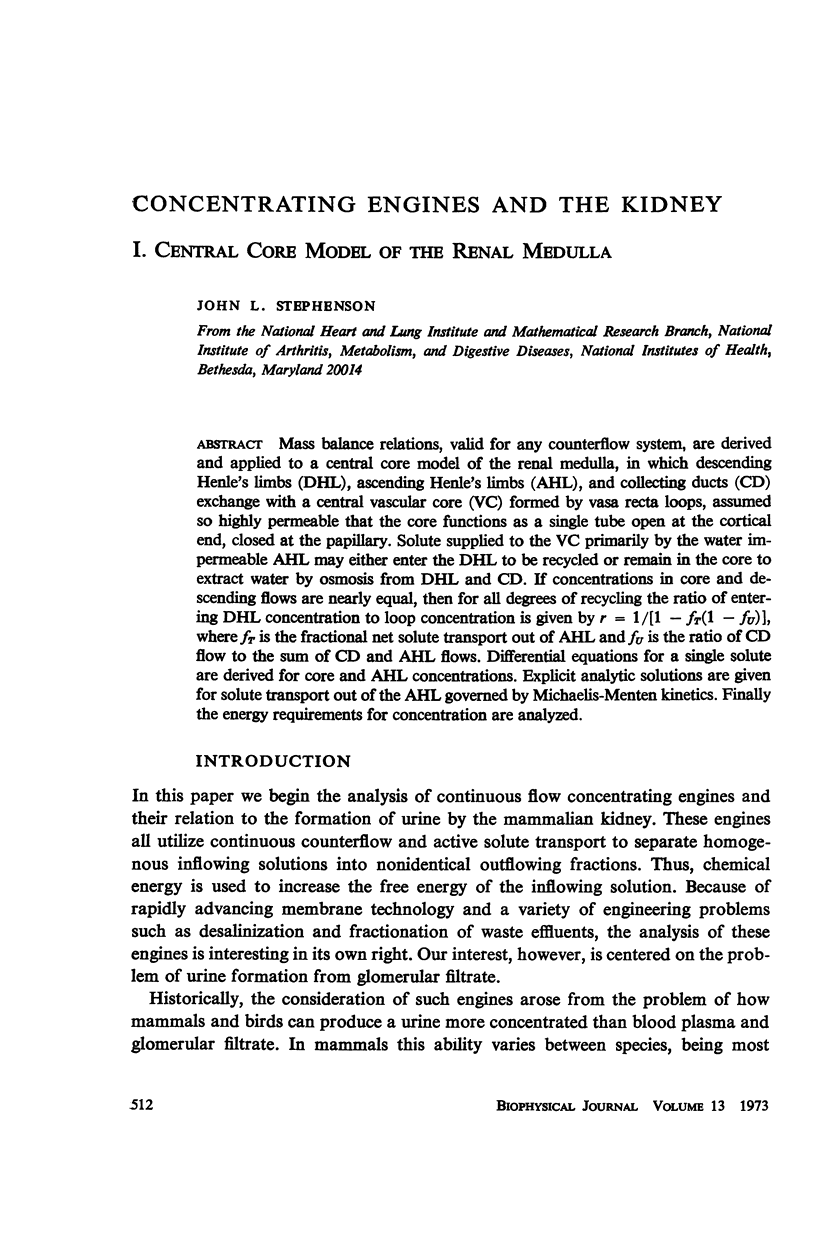
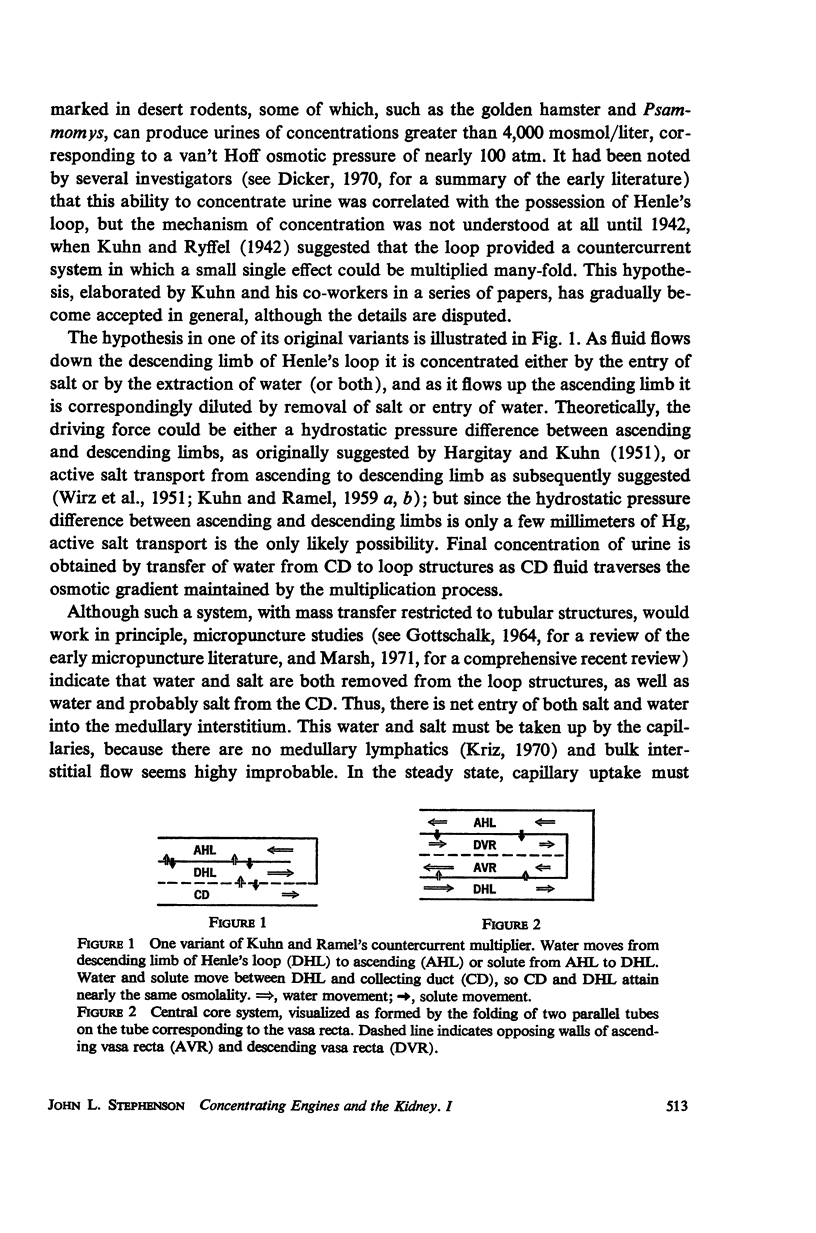
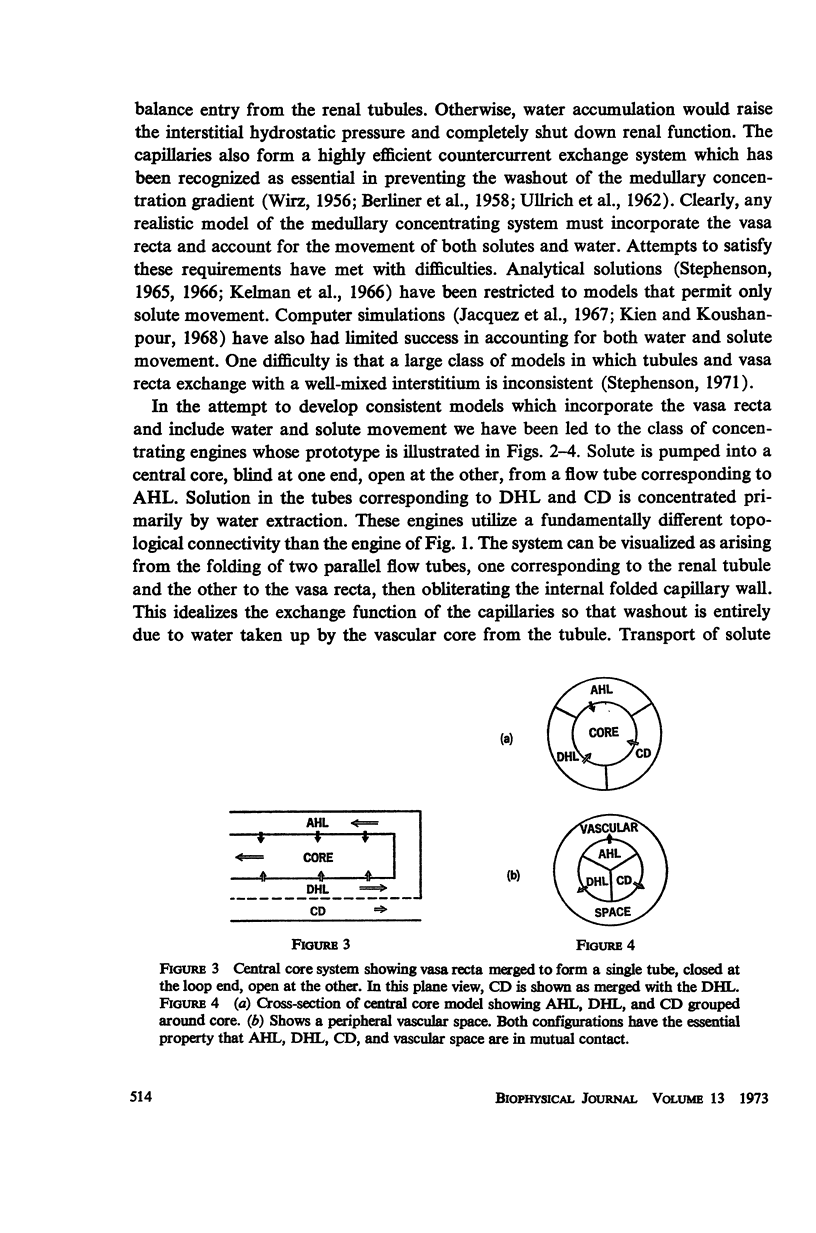
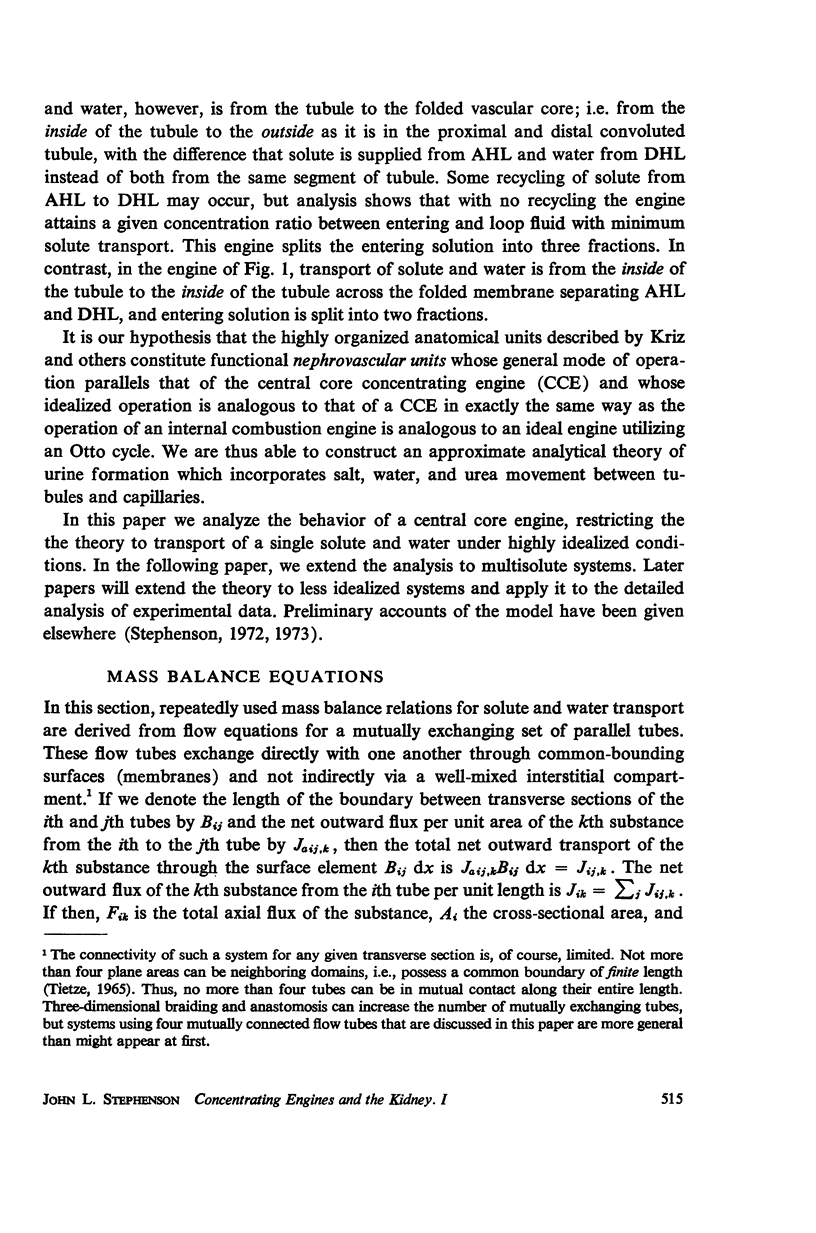
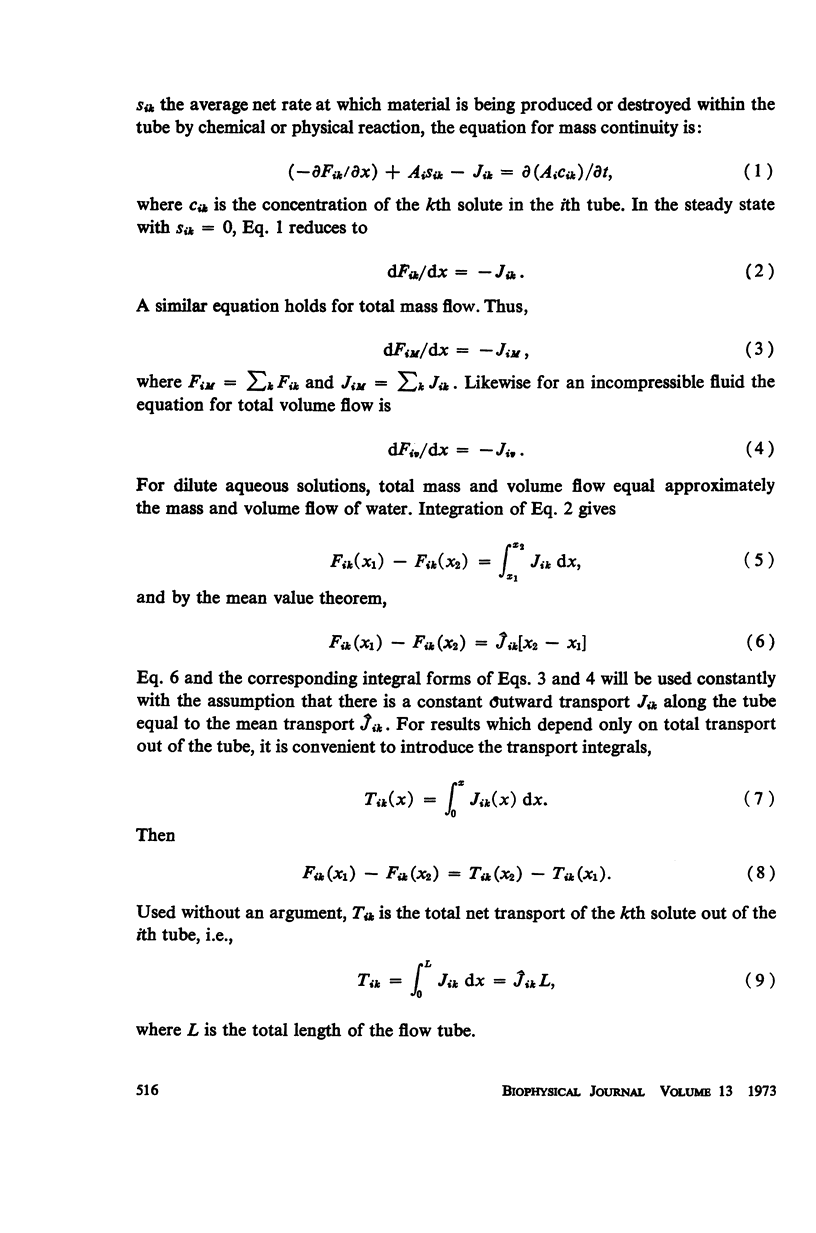
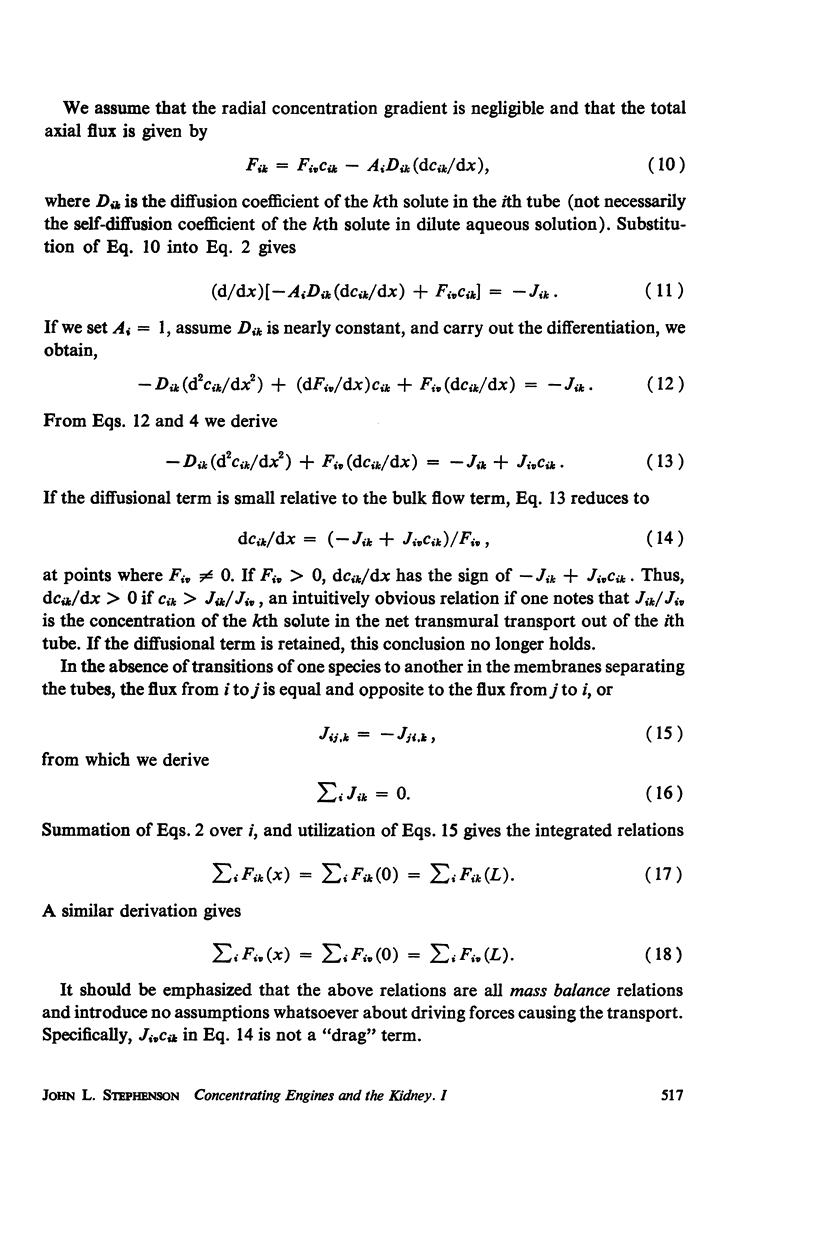
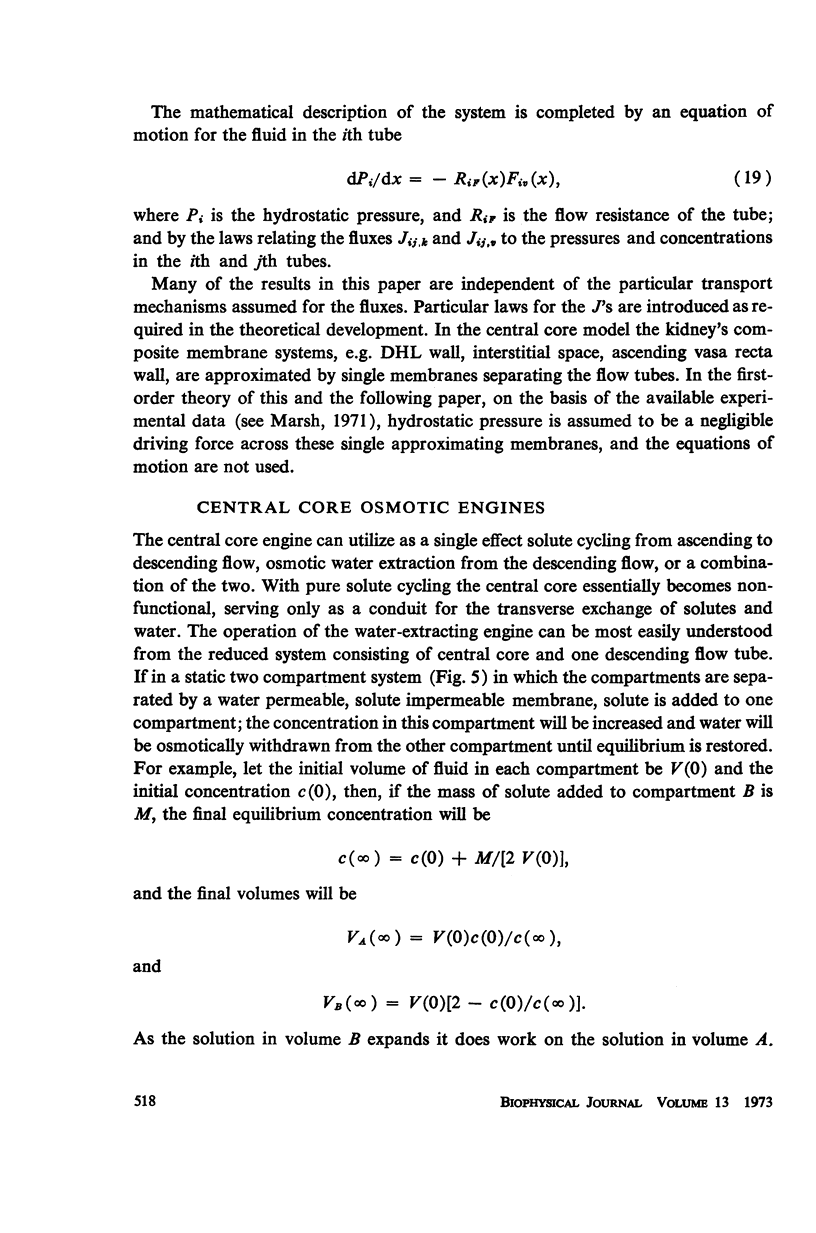
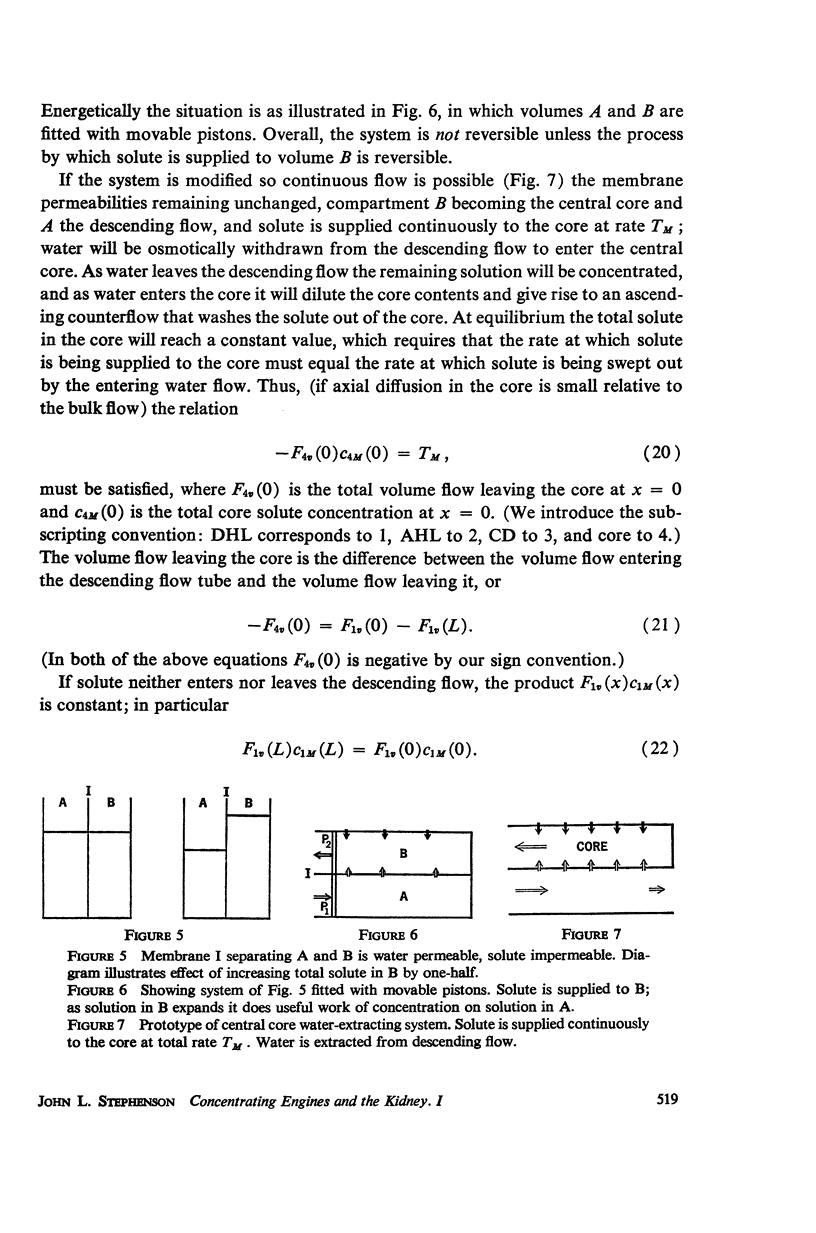
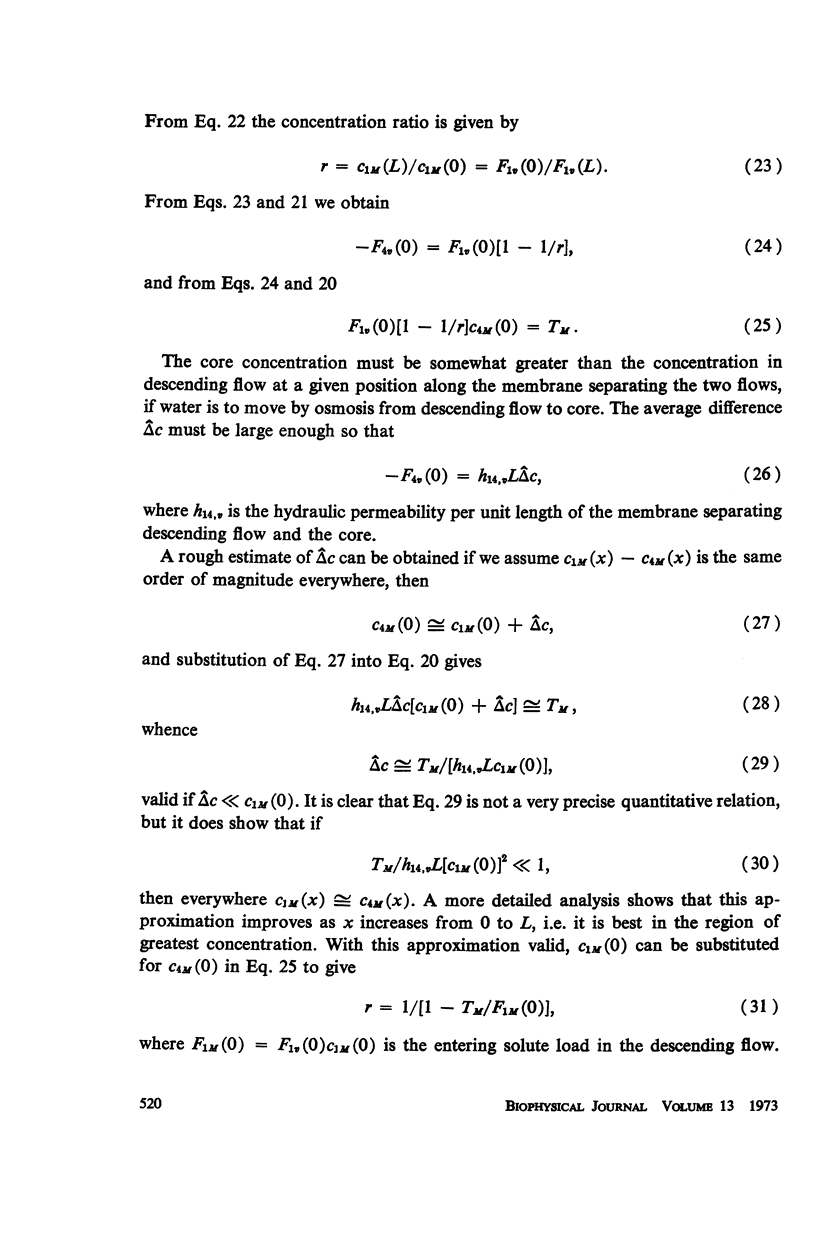
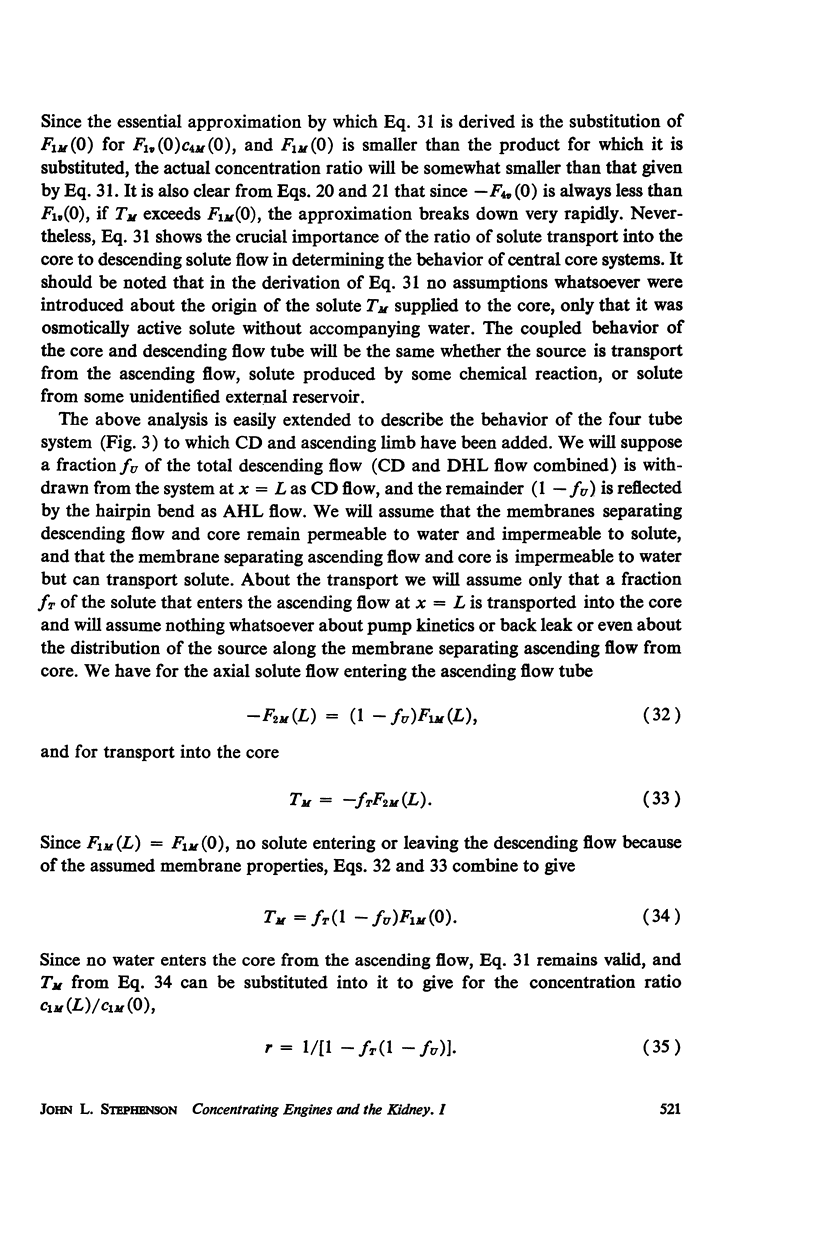
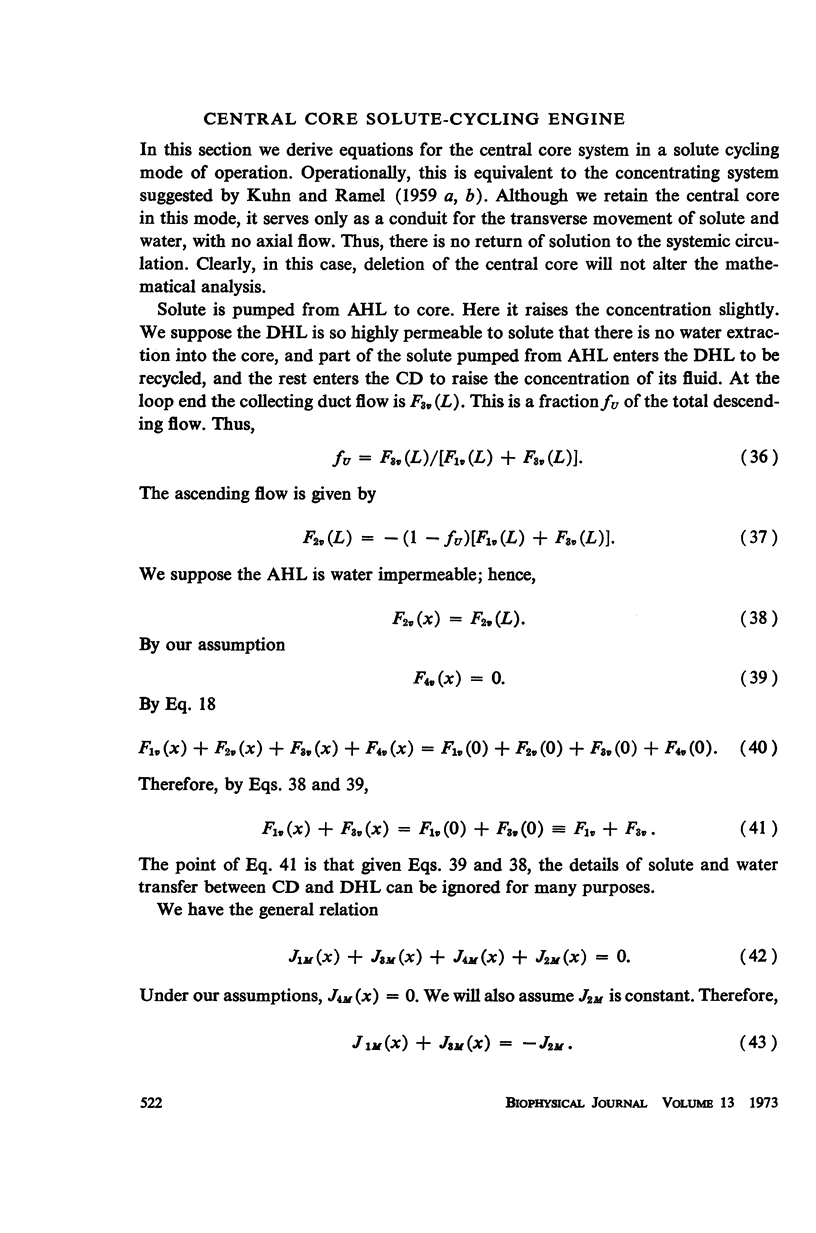
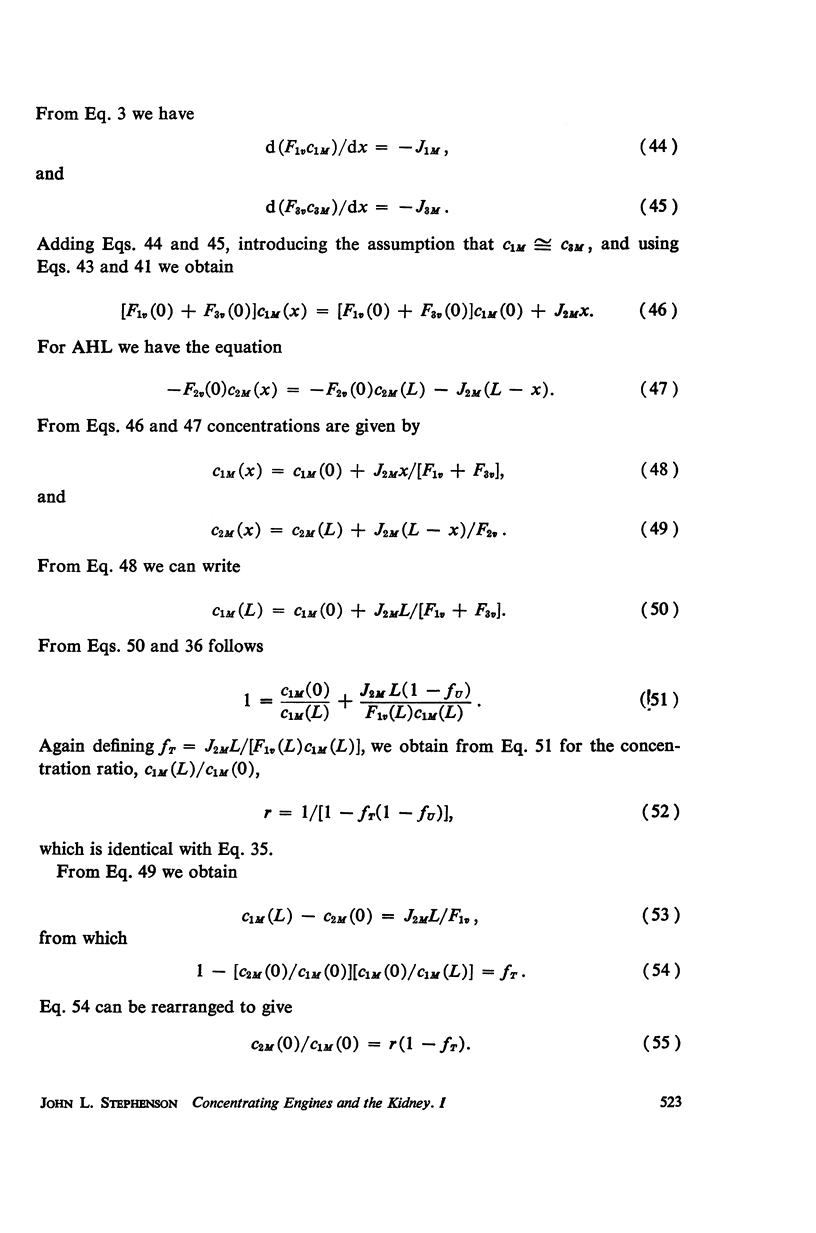
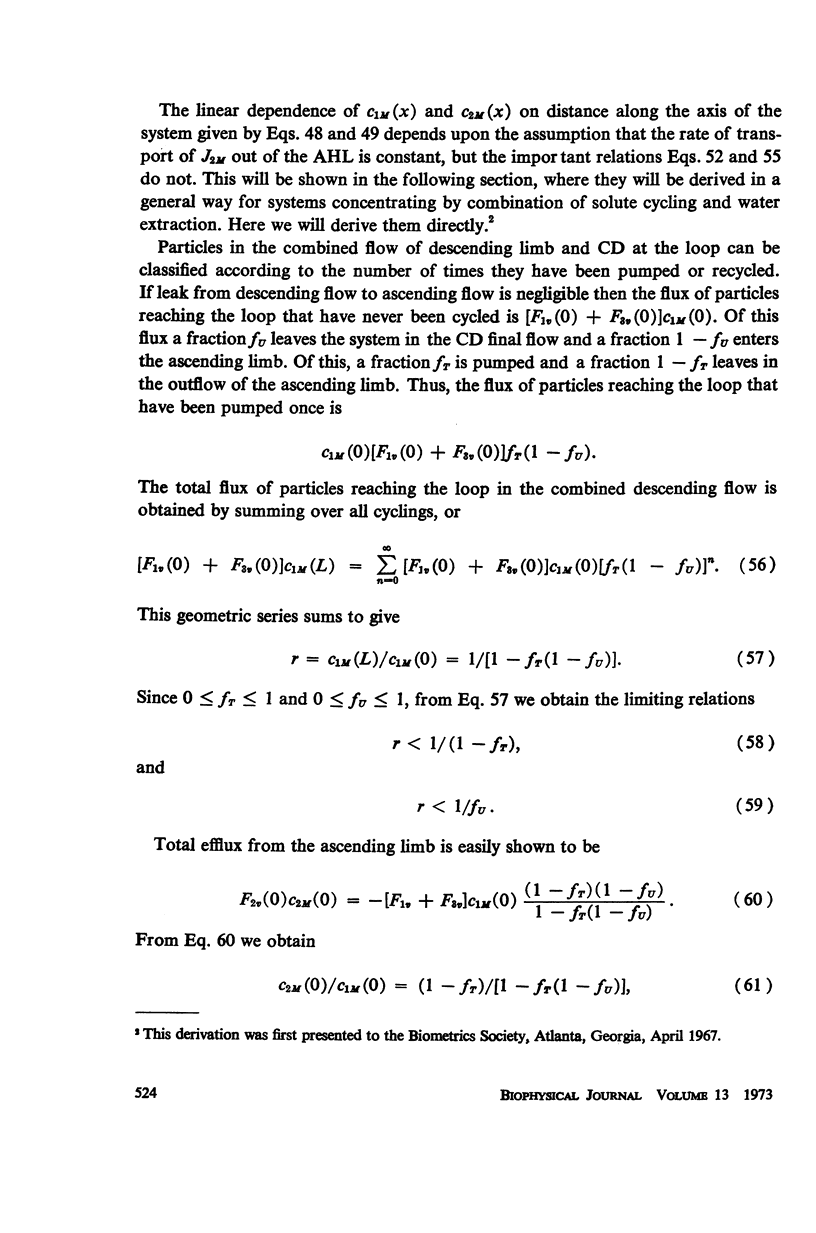
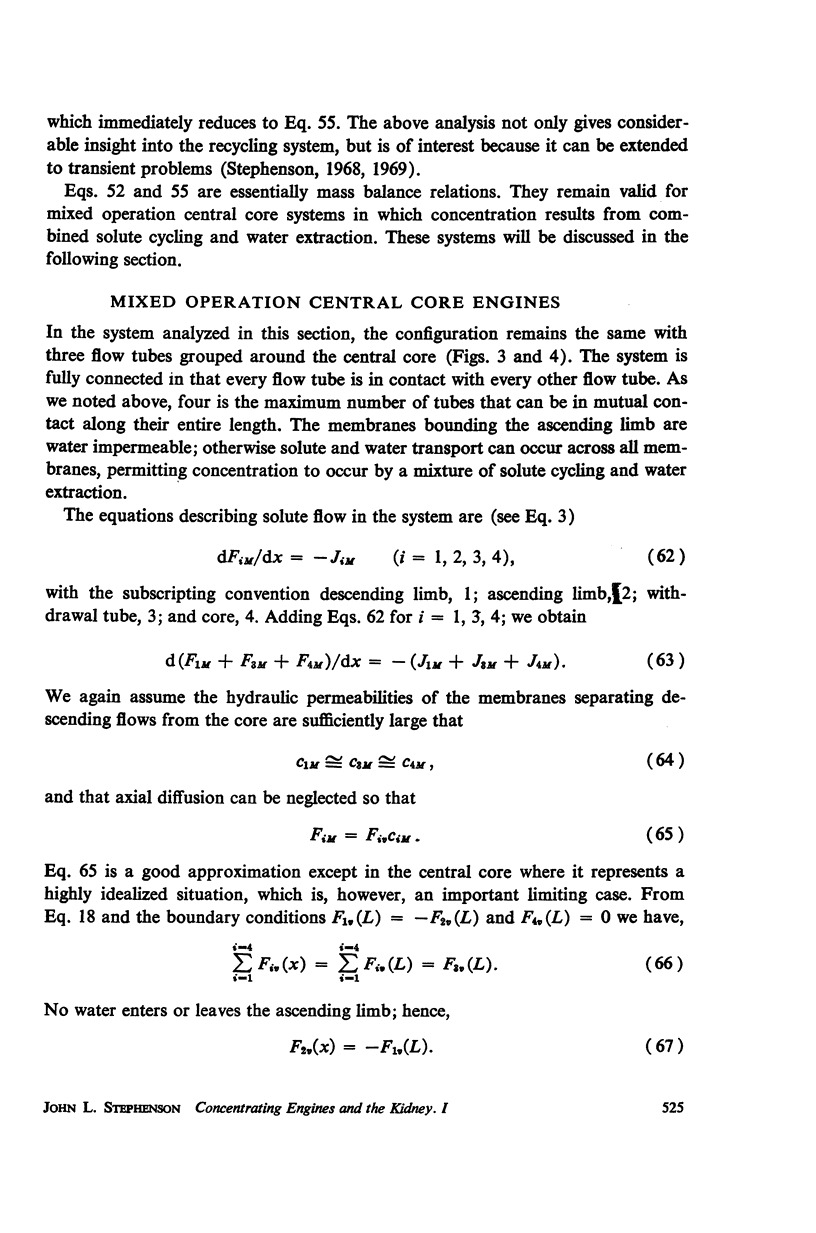
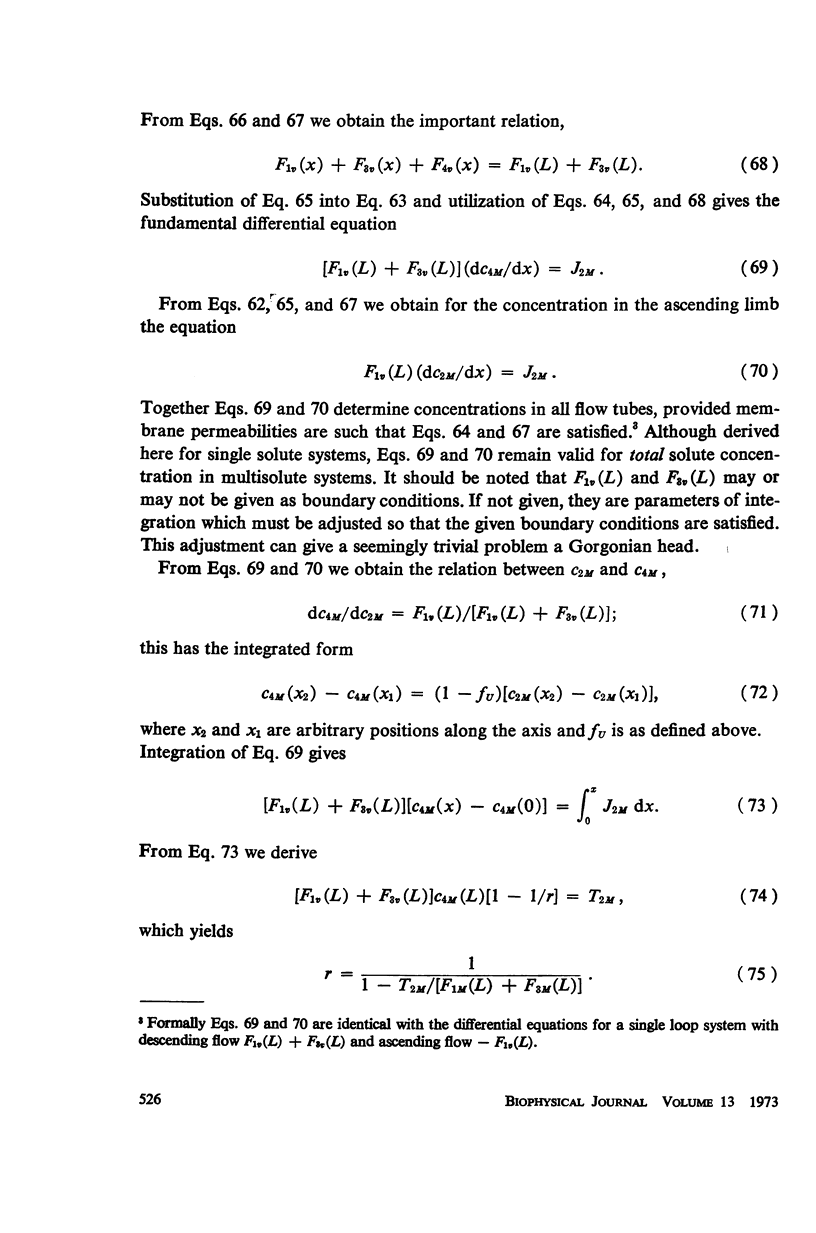
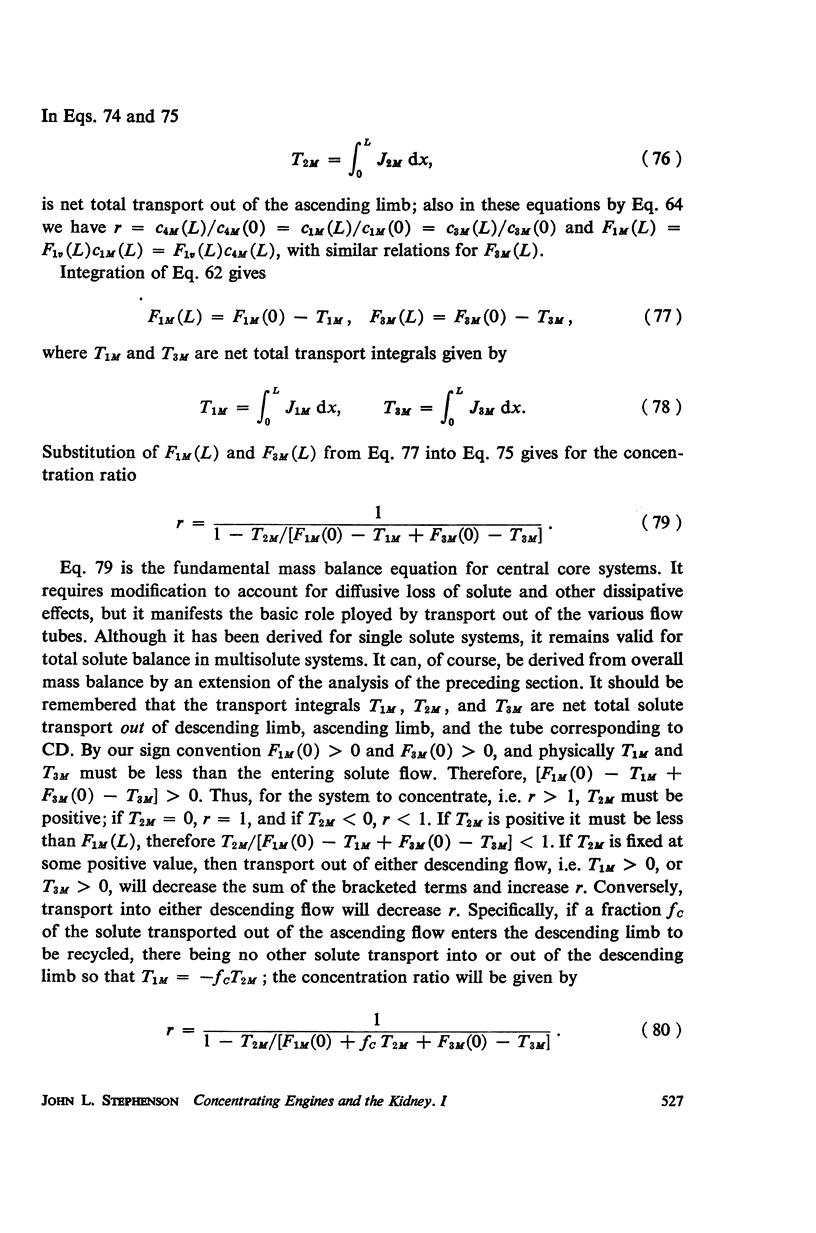
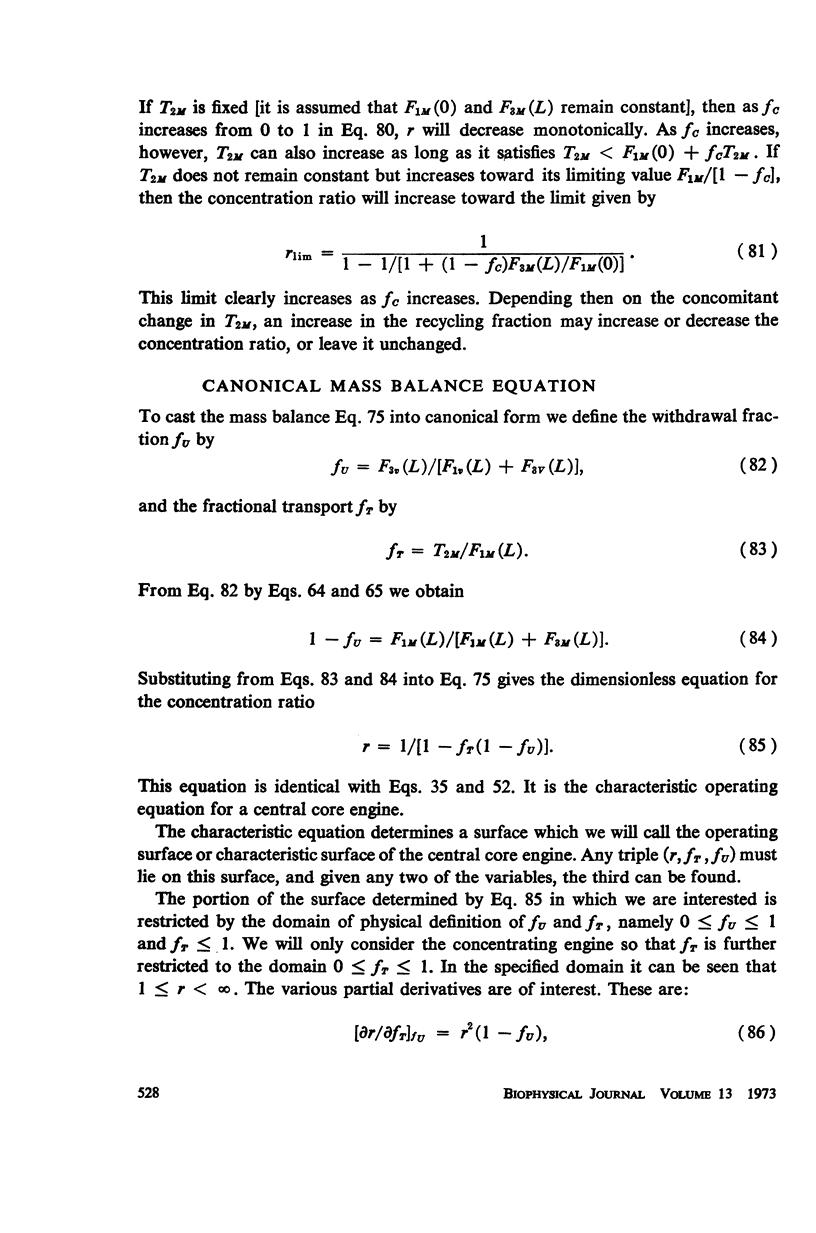
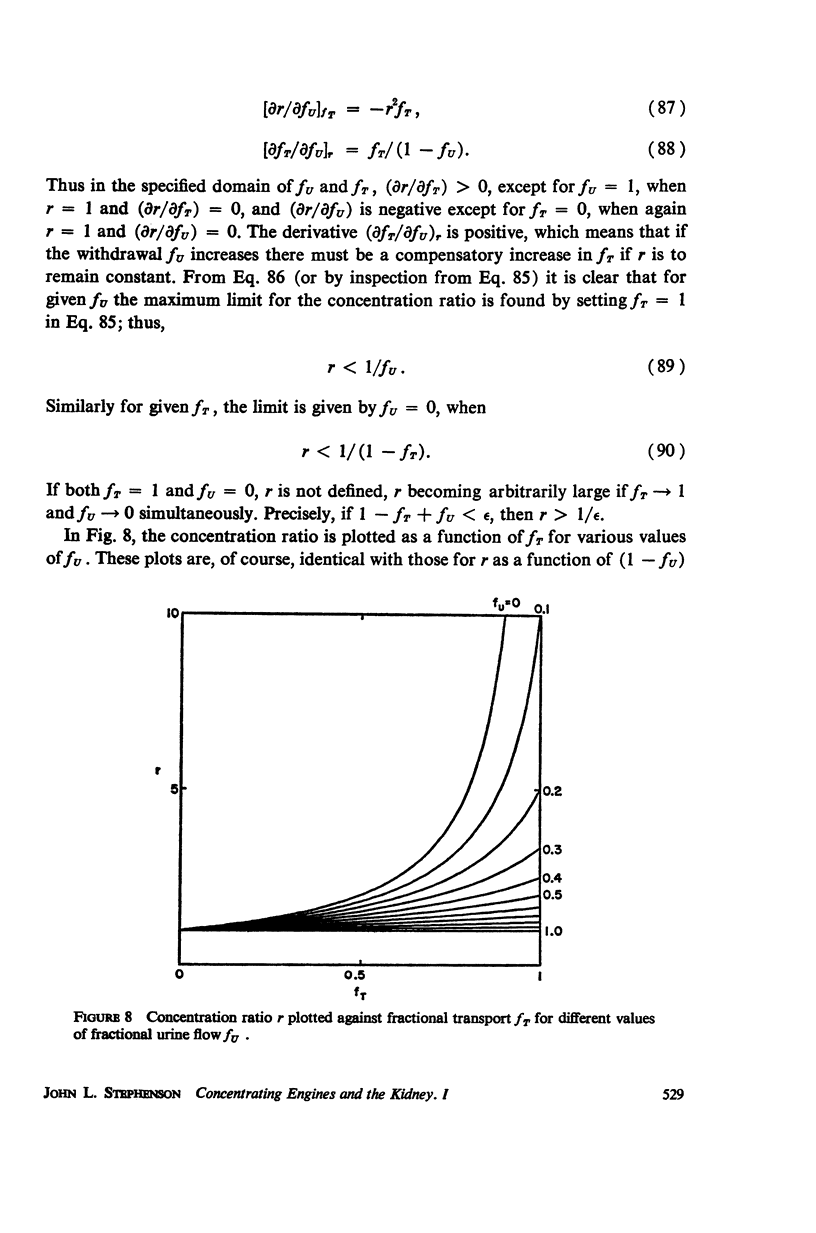
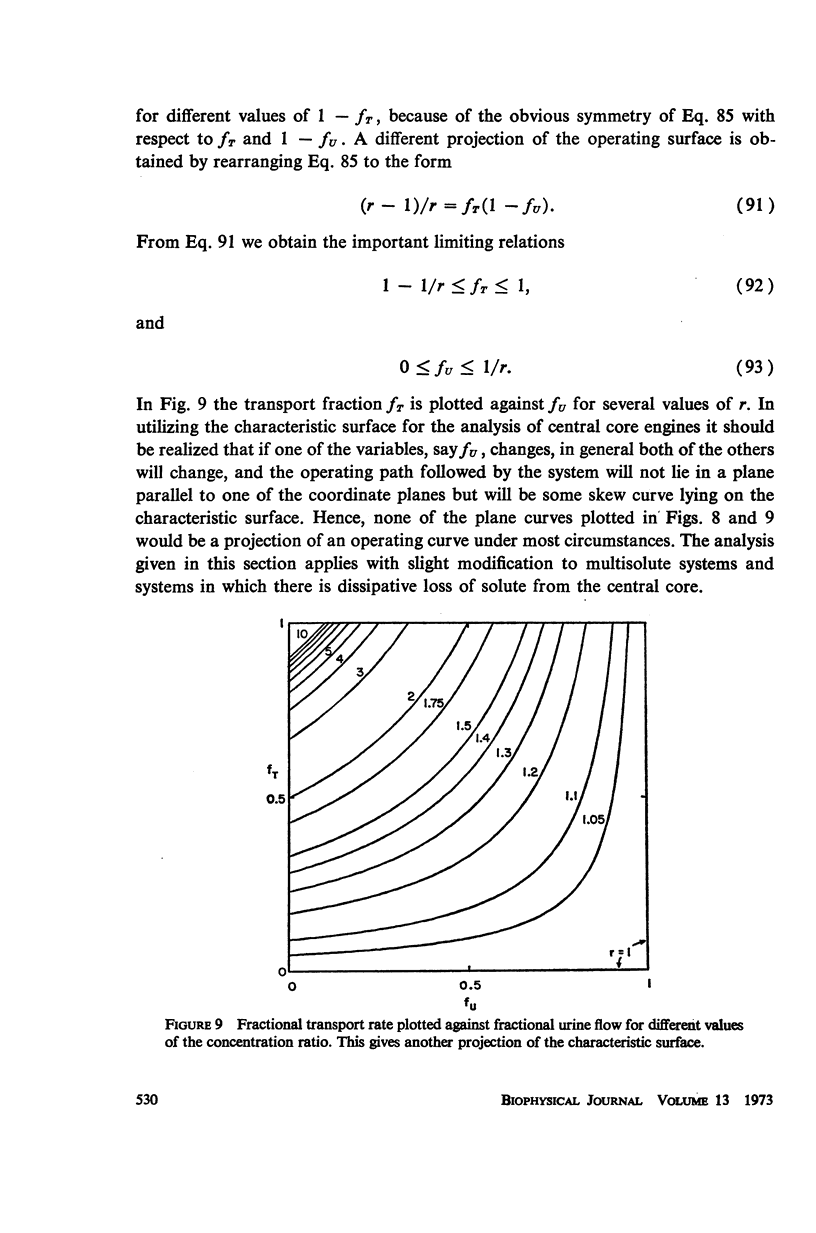
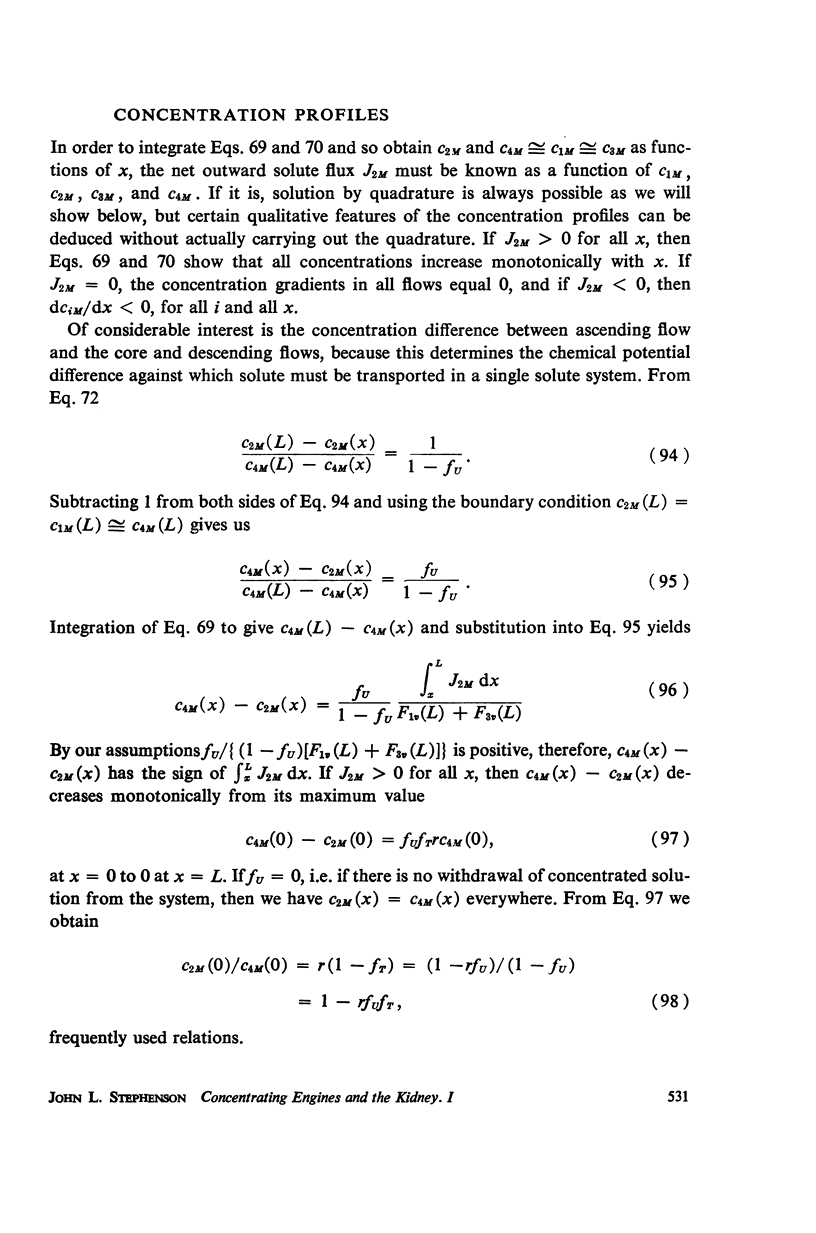
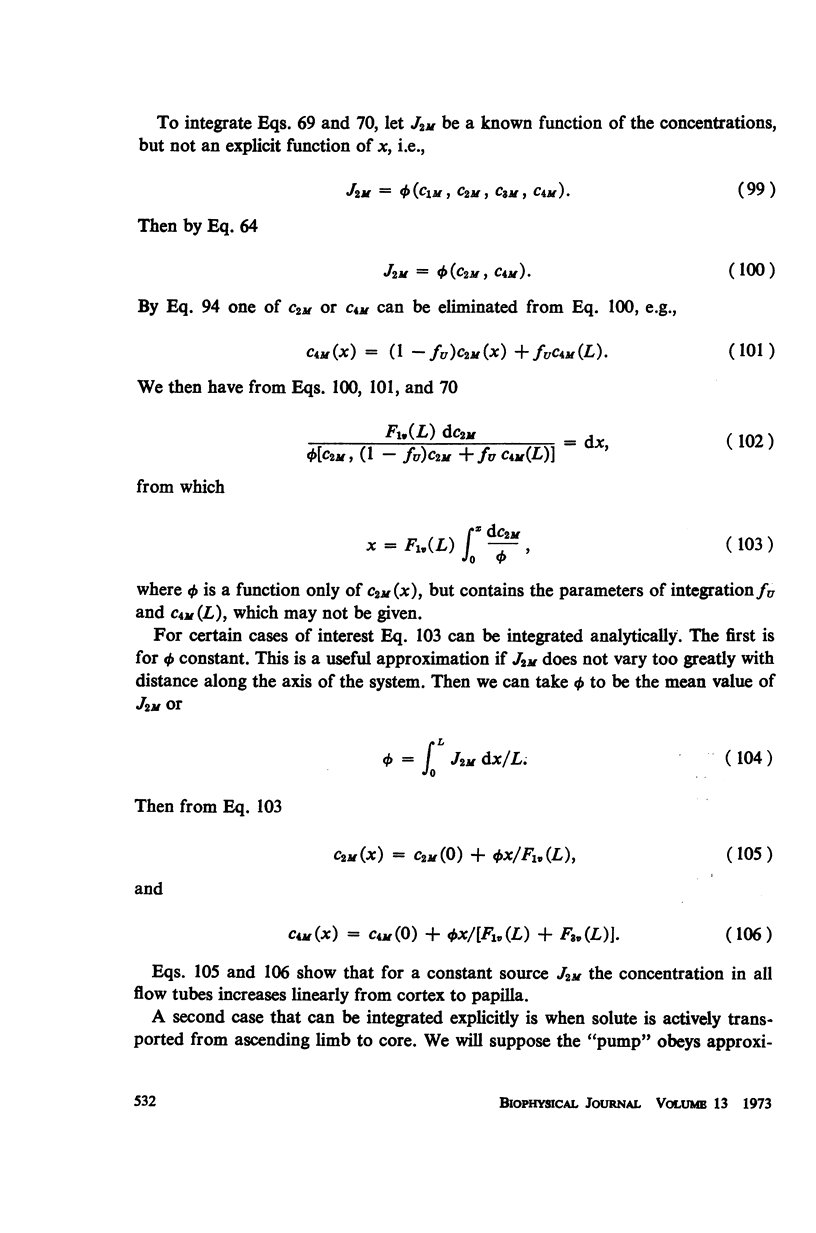
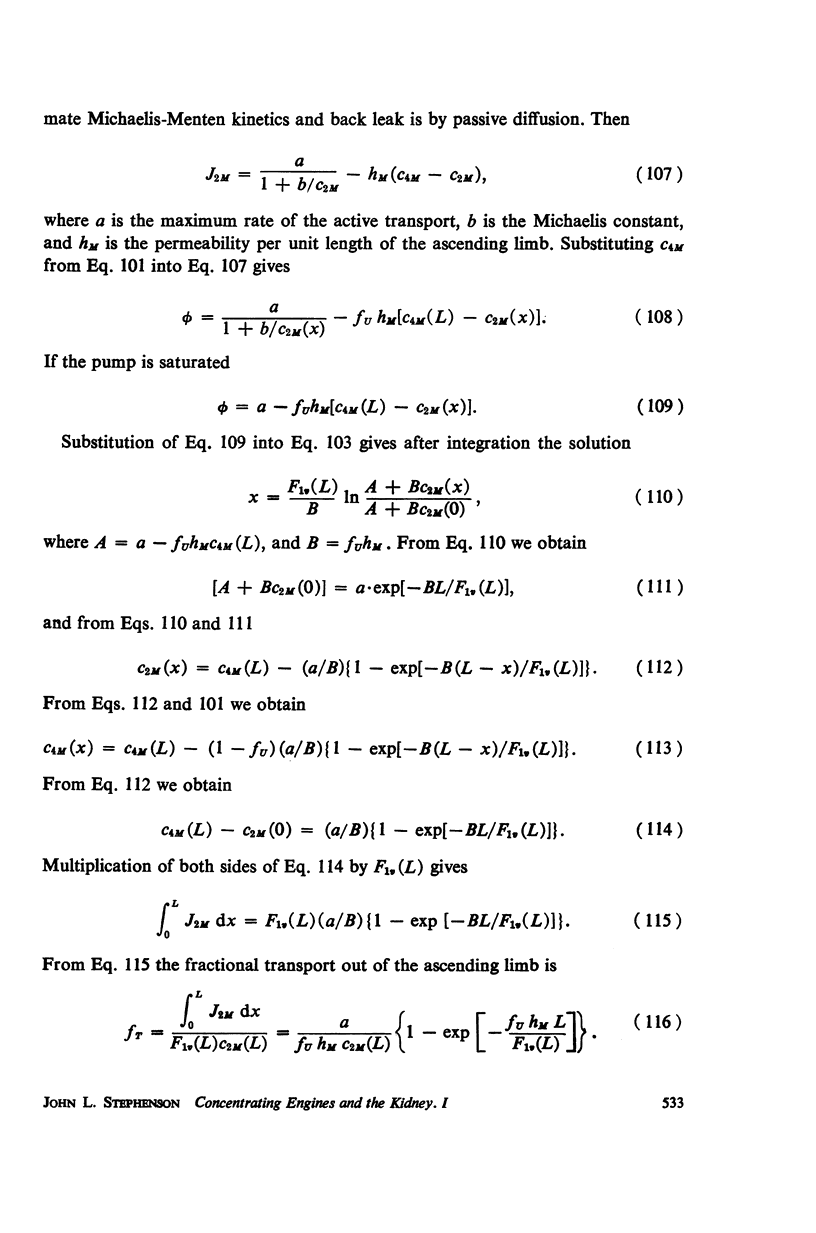
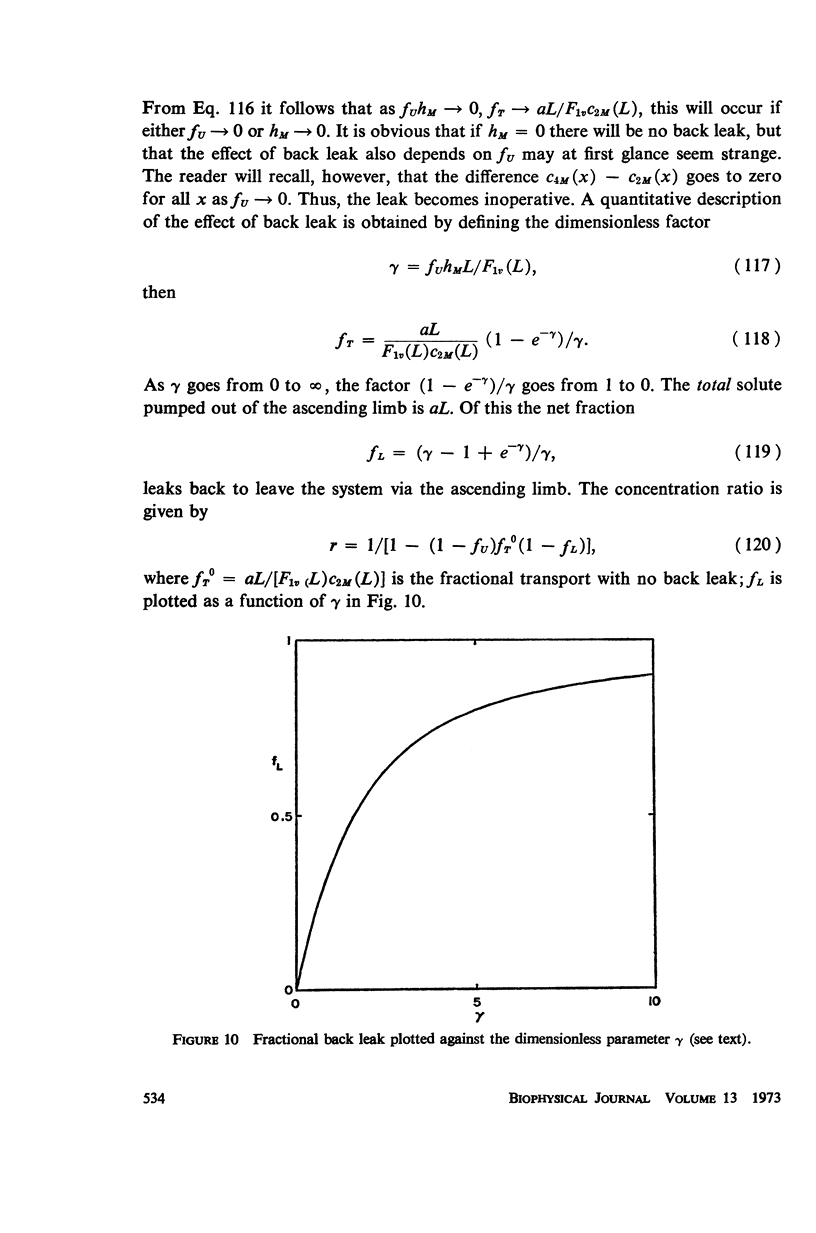
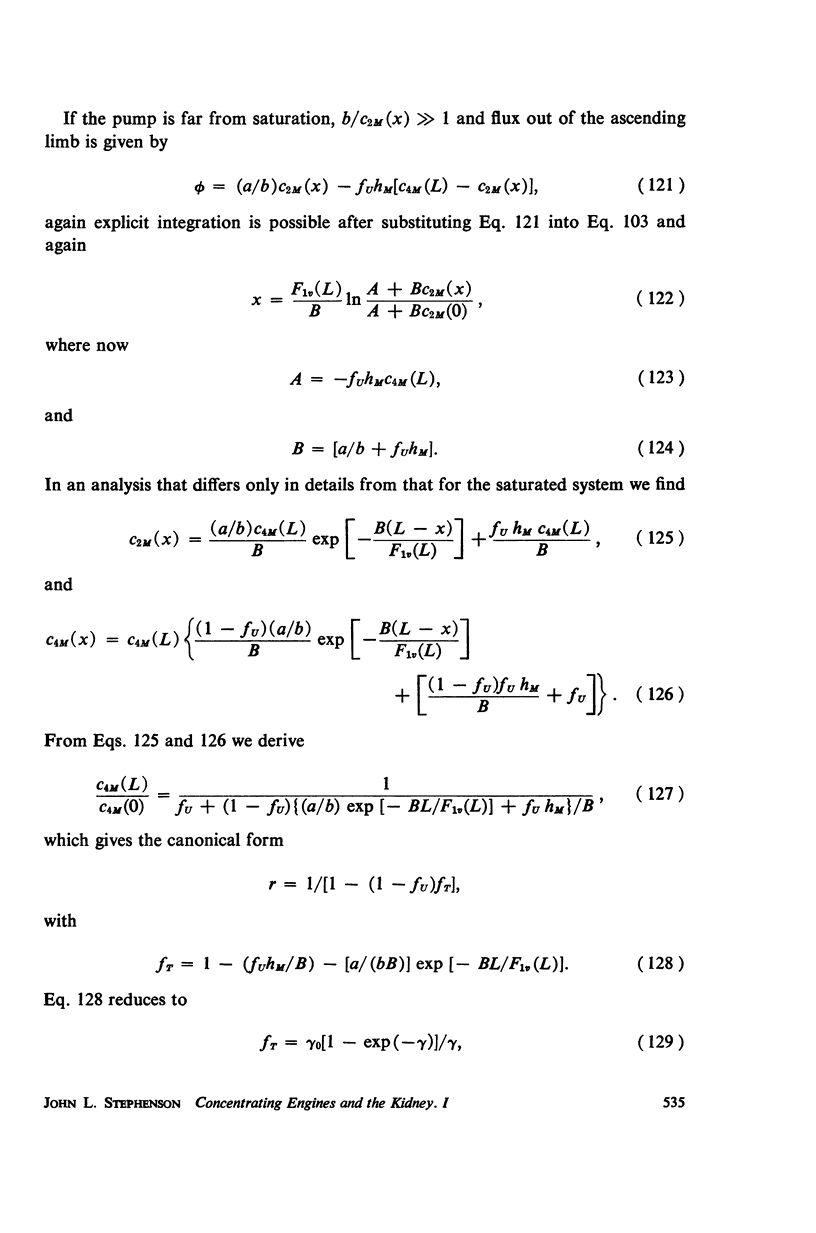
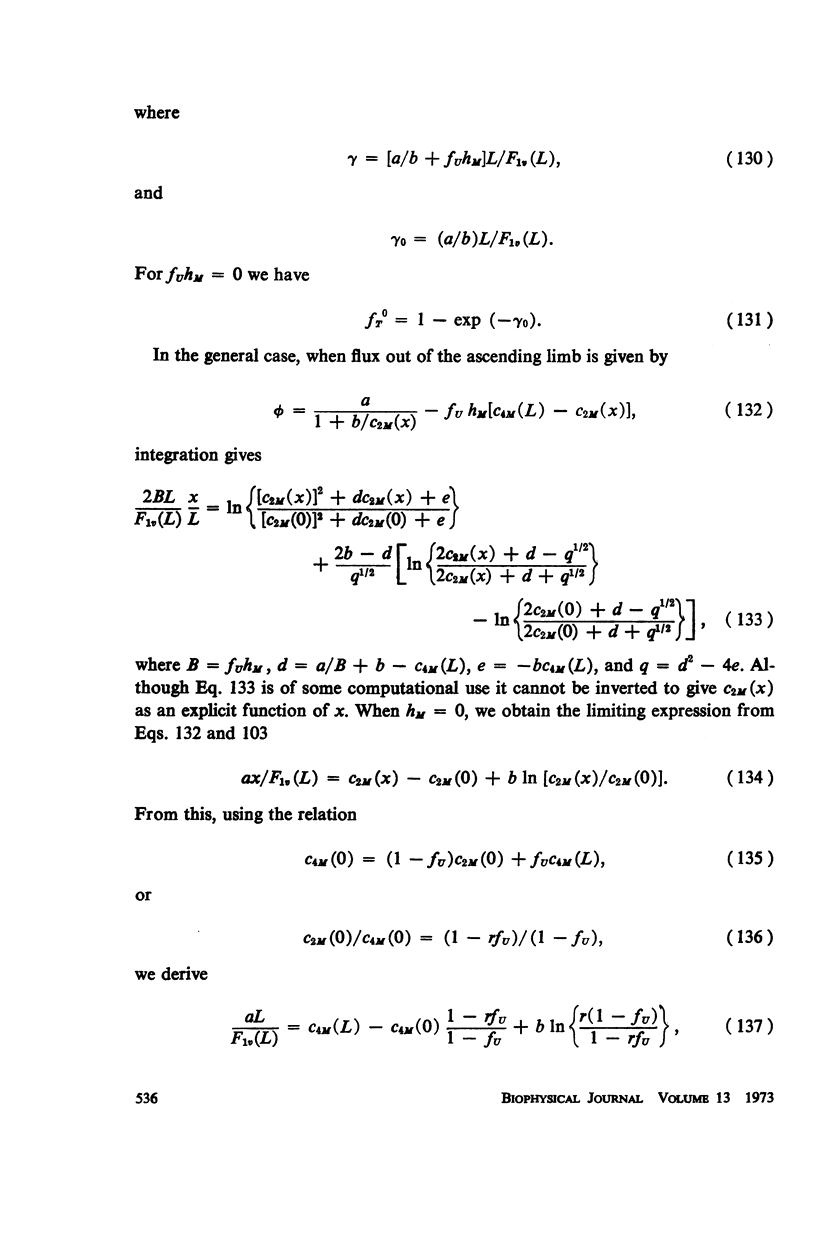
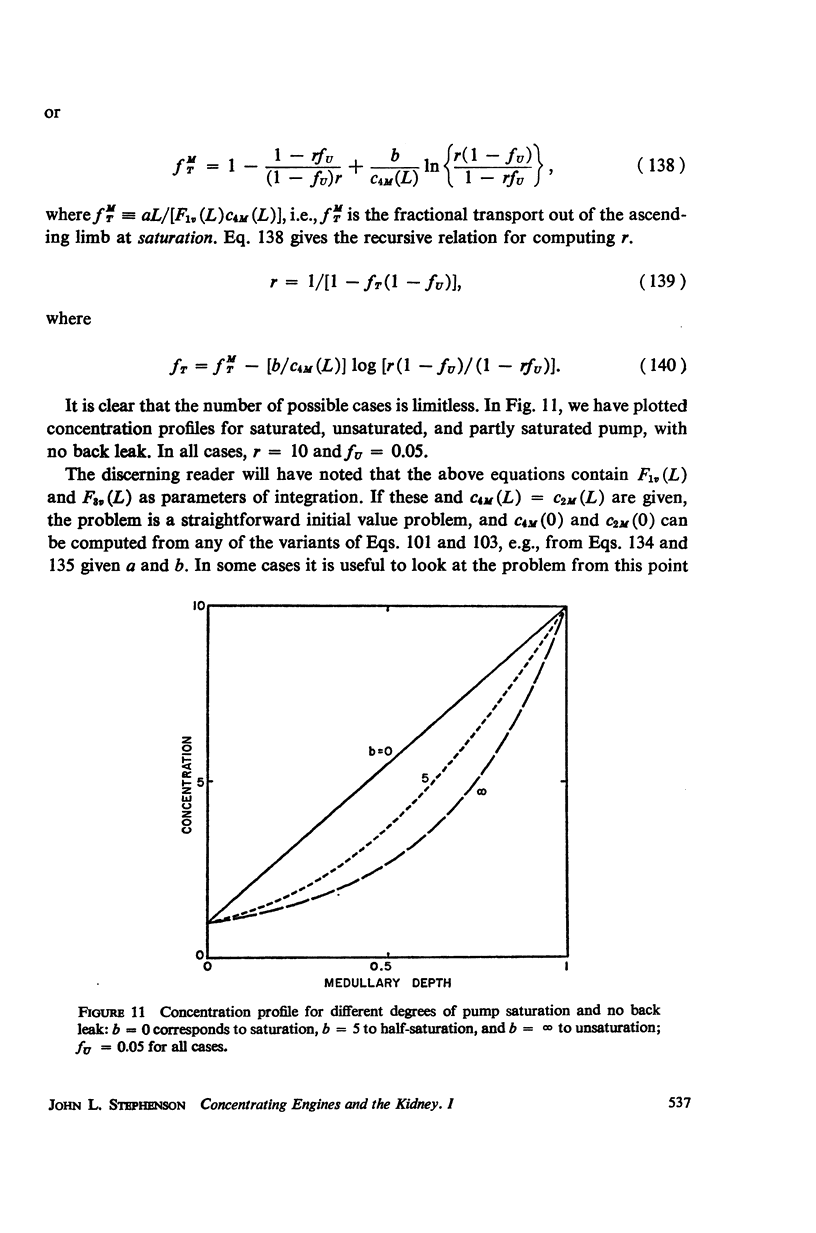
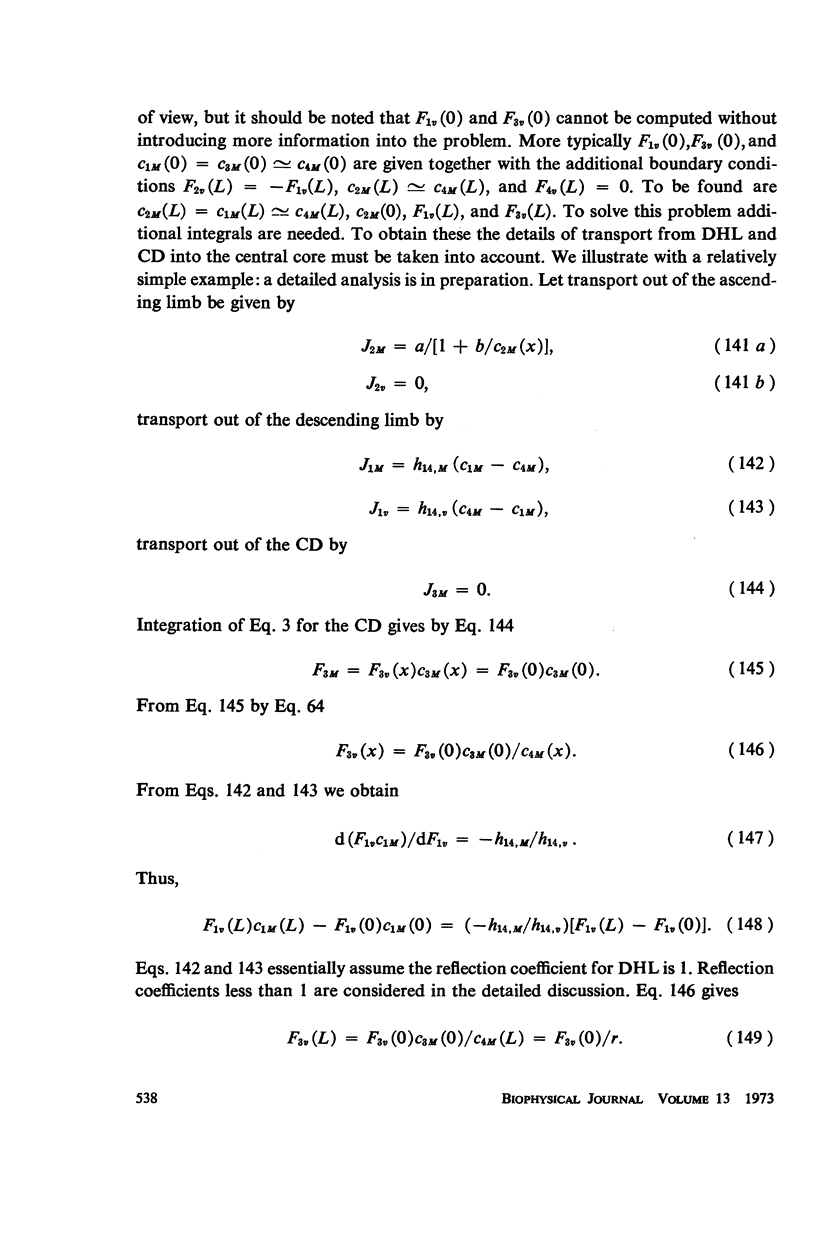
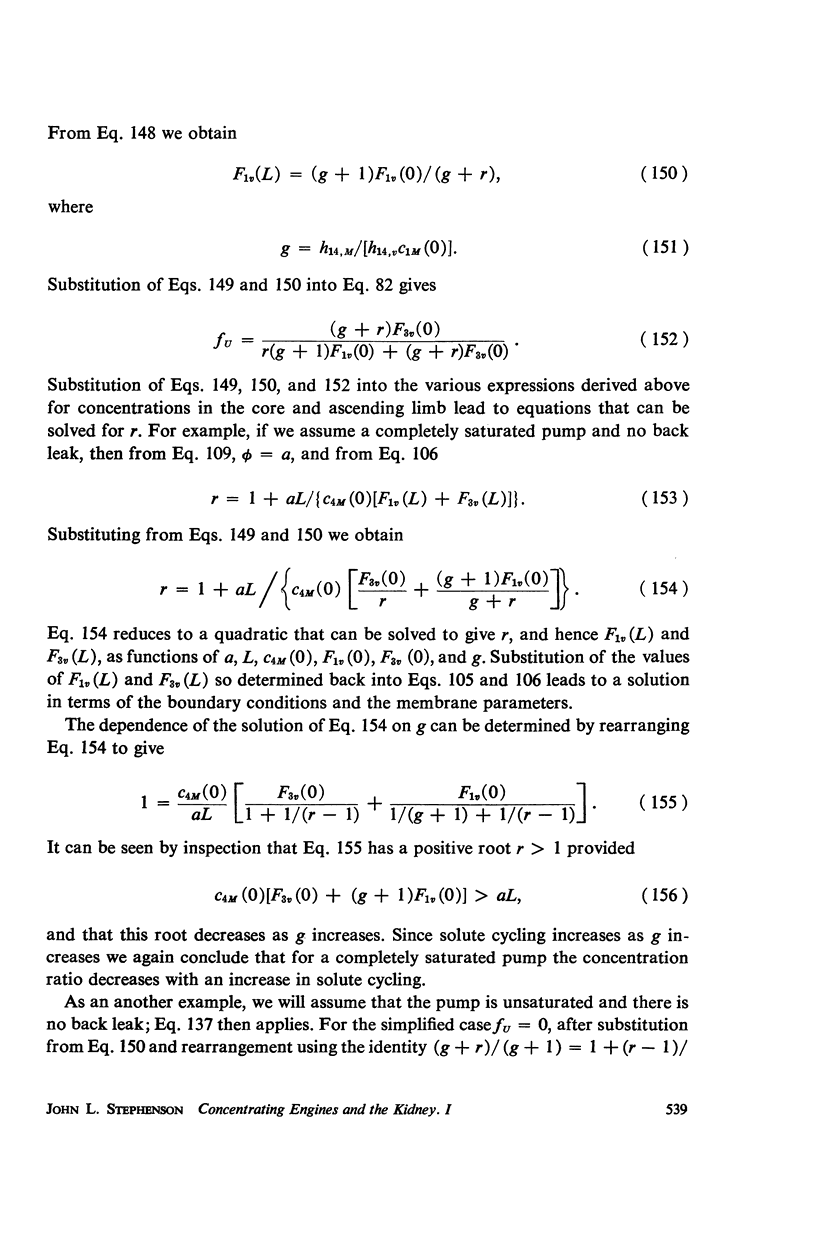
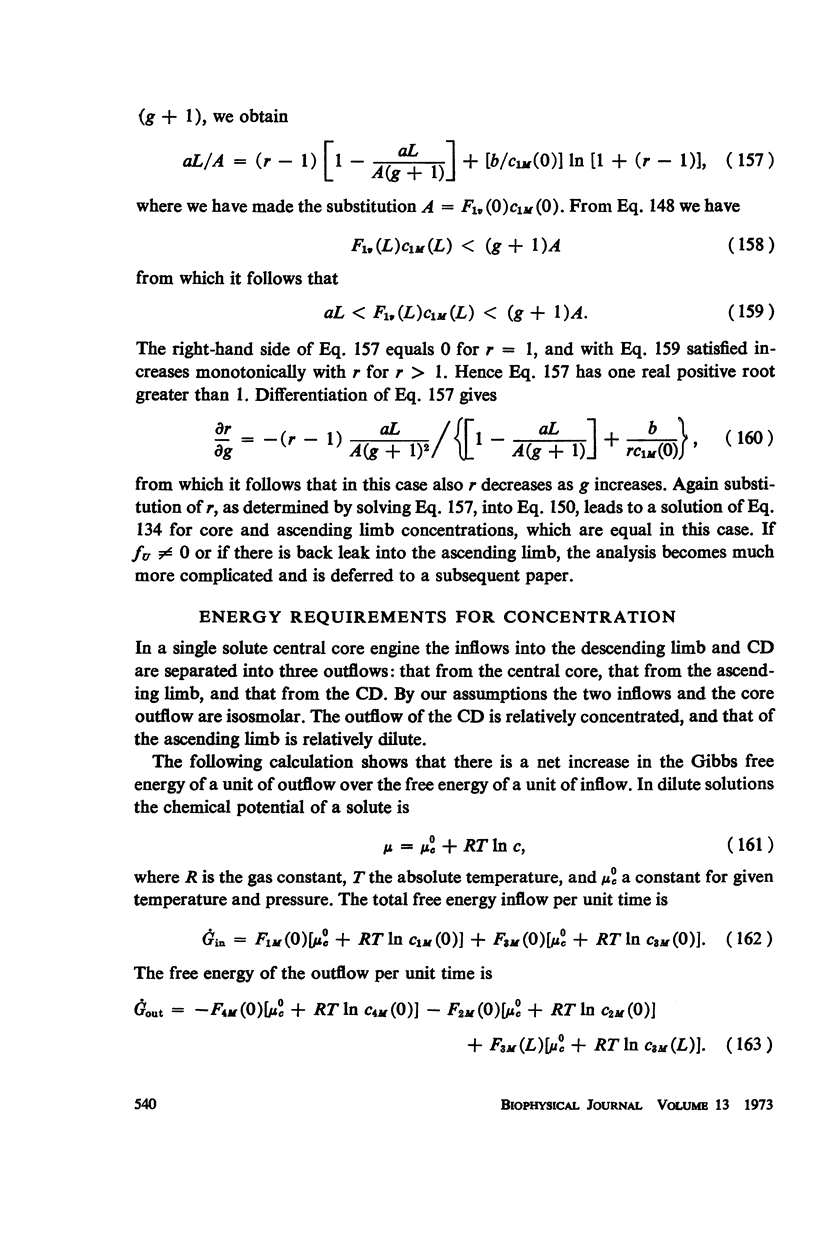
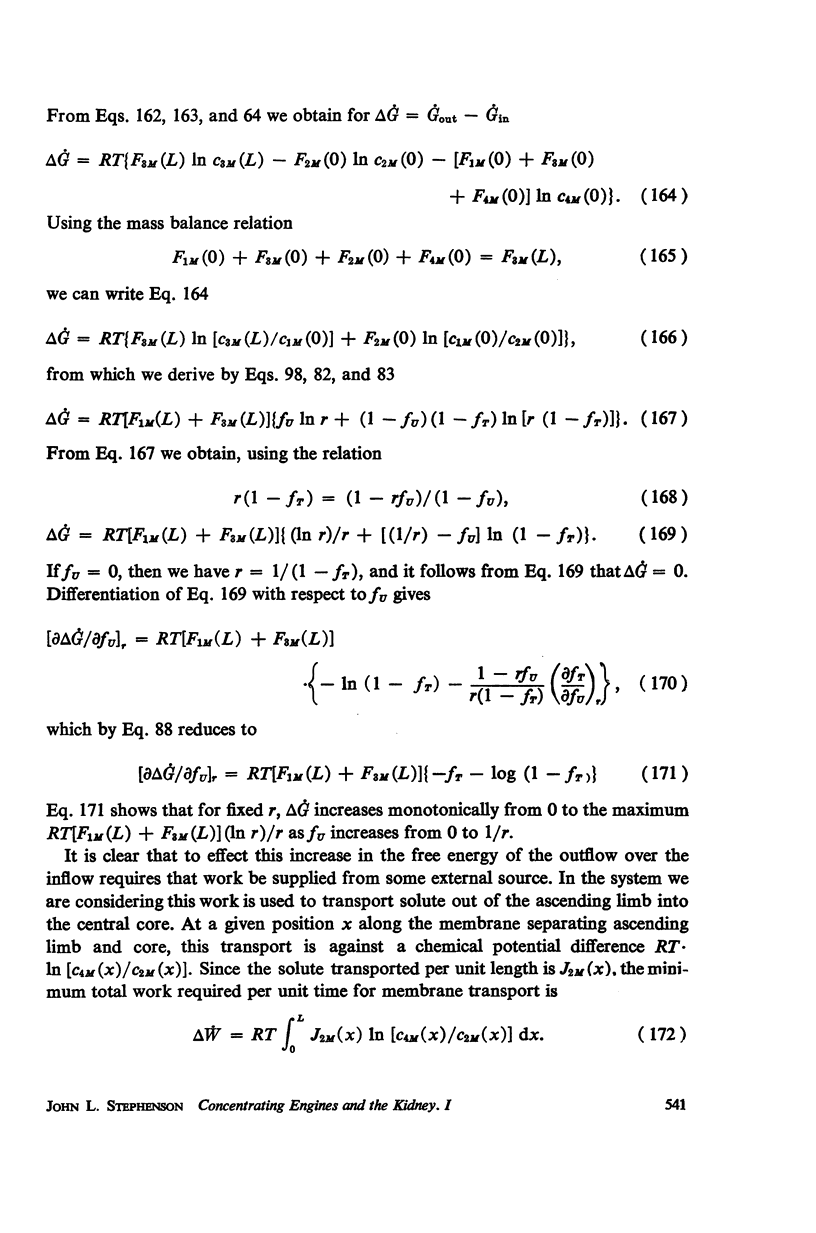
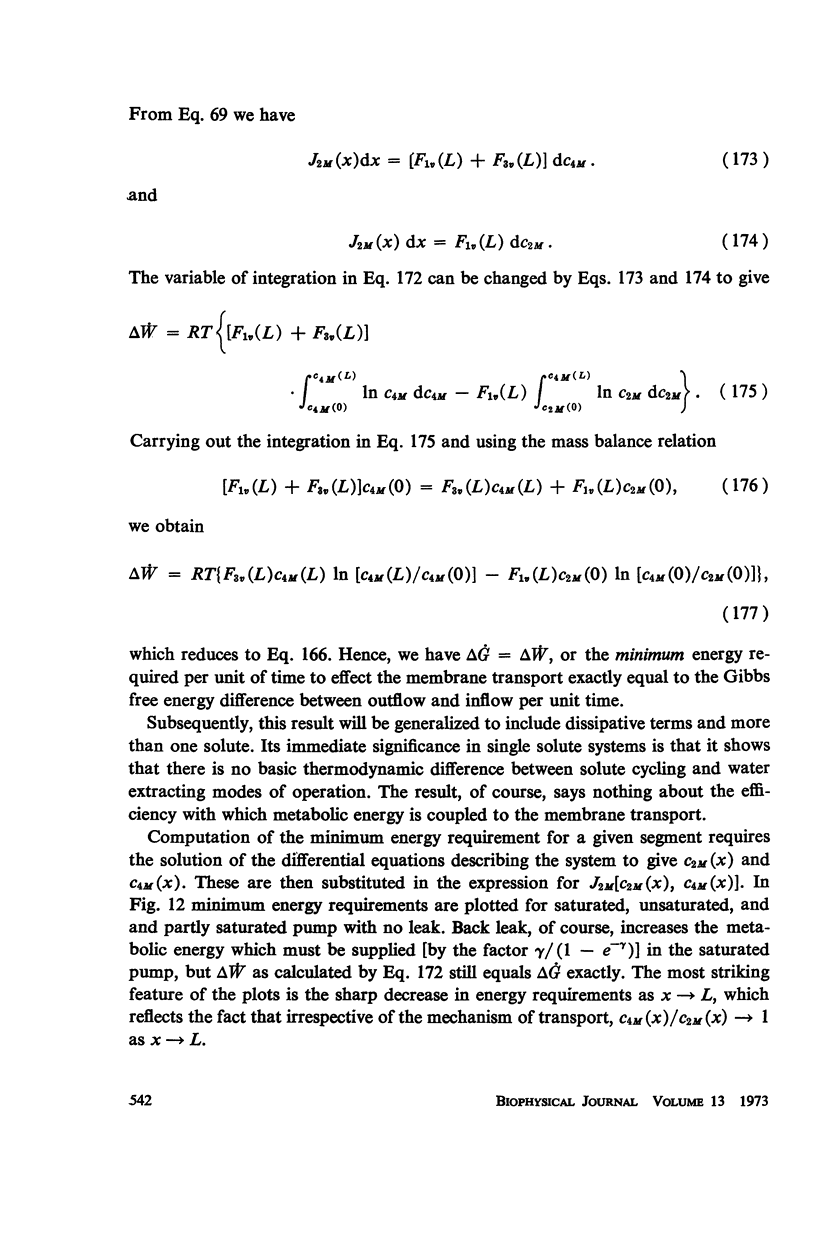
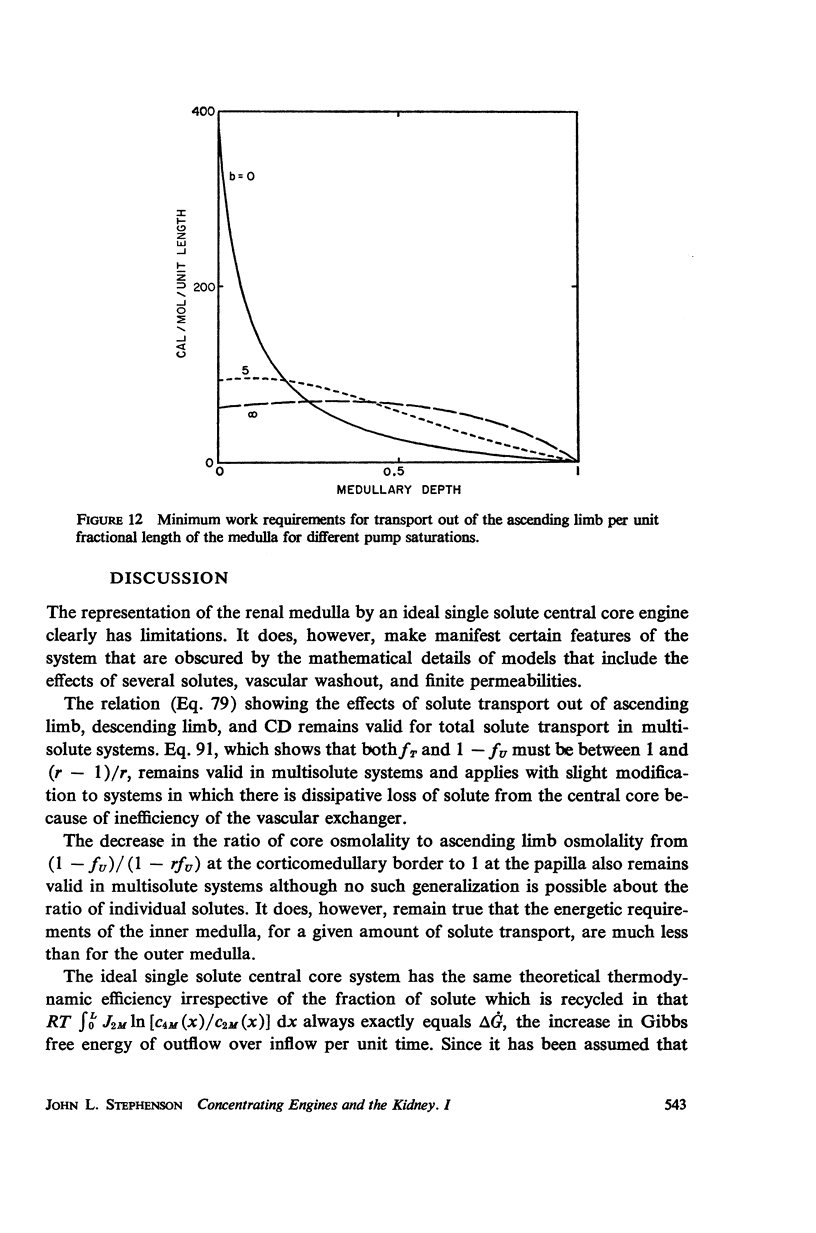
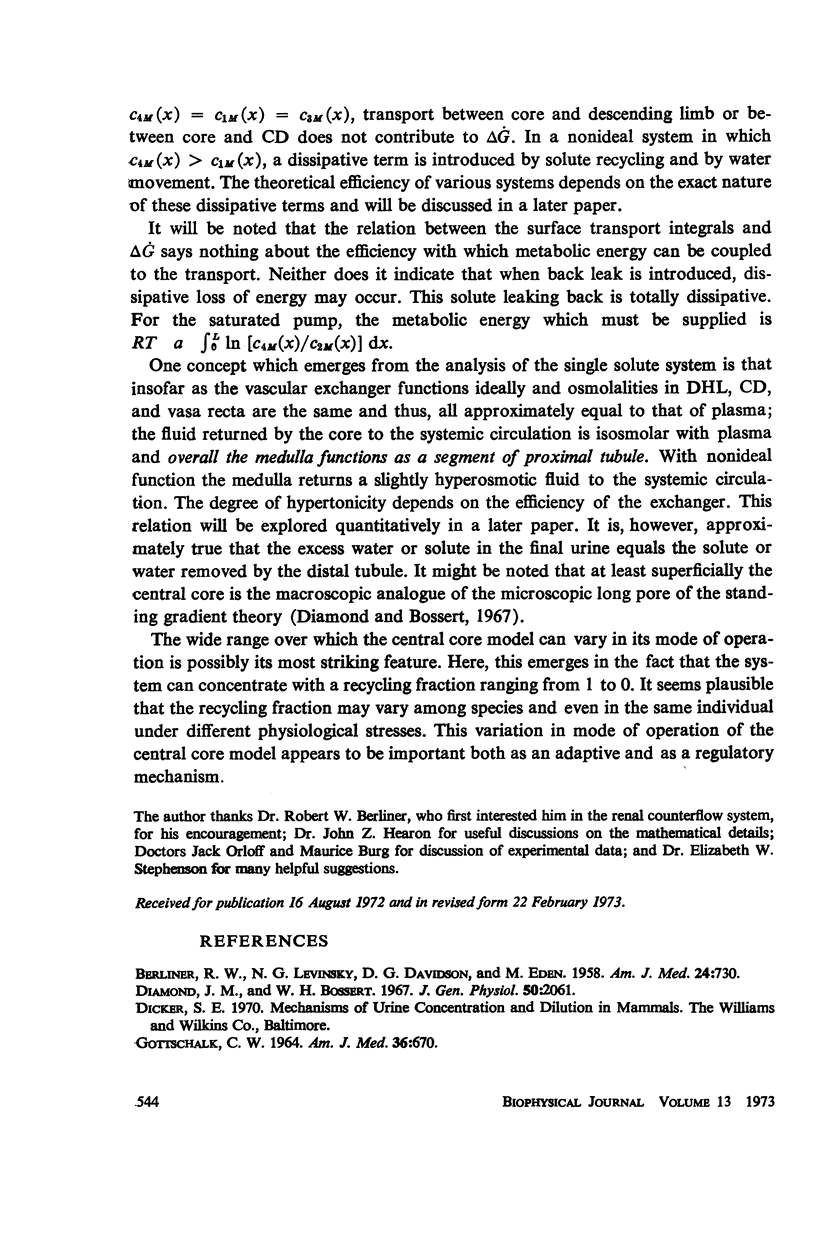
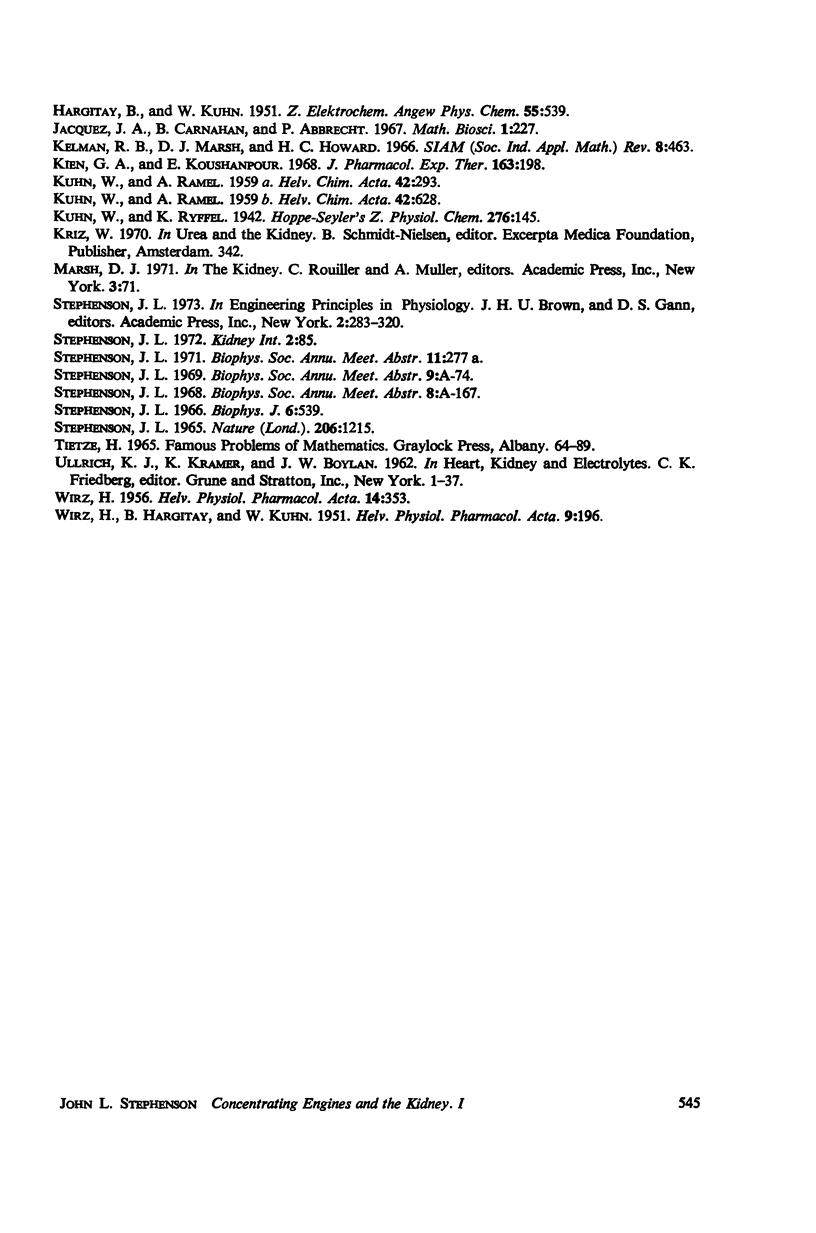
Selected References
These references are in PubMed. This may not be the complete list of references from this article.
- BERLINER R. W., LEVINSKY N. G., DAVIDSON D. G., EDEN M. Dilution and concentration of the urine and the action of antidiuretic hormone. Am J Med. 1958 May;24(5):730–744. doi: 10.1016/0002-9343(58)90377-2. [DOI] [PubMed] [Google Scholar]
- Stephenson J. L. Ability of counterflow systems to concentrate. Nature. 1965 Jun 19;206(990):1215–1219. doi: 10.1038/2061215a0. [DOI] [PubMed] [Google Scholar]
- WIRZ H., HARGITAY B., KUHN W. Lokalisation des Konzentrierungsprozesses in der Niere durch direkte Kryoskopie. Helv Physiol Pharmacol Acta. 1951 Jun;9(2):196–207. [PubMed] [Google Scholar]


